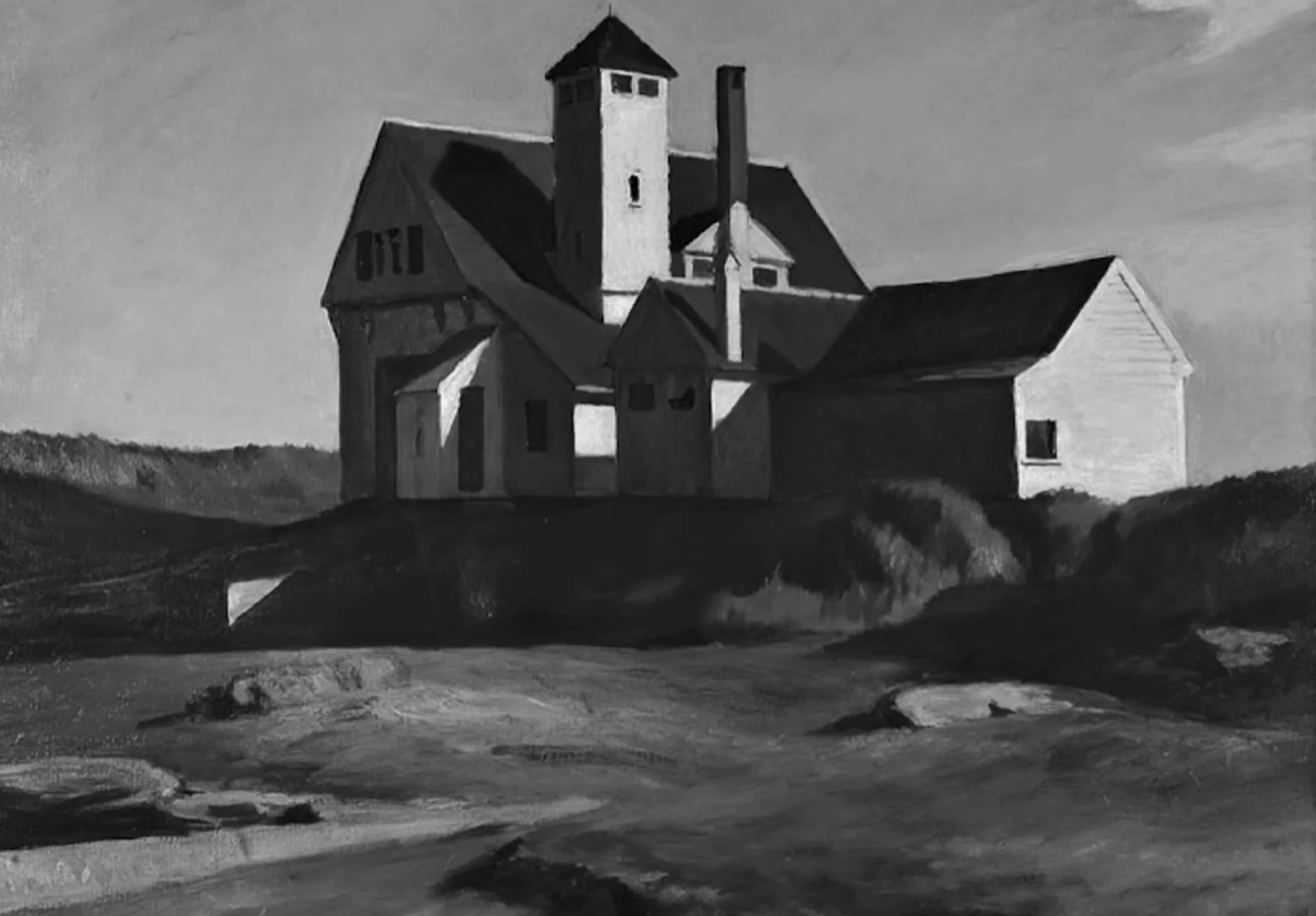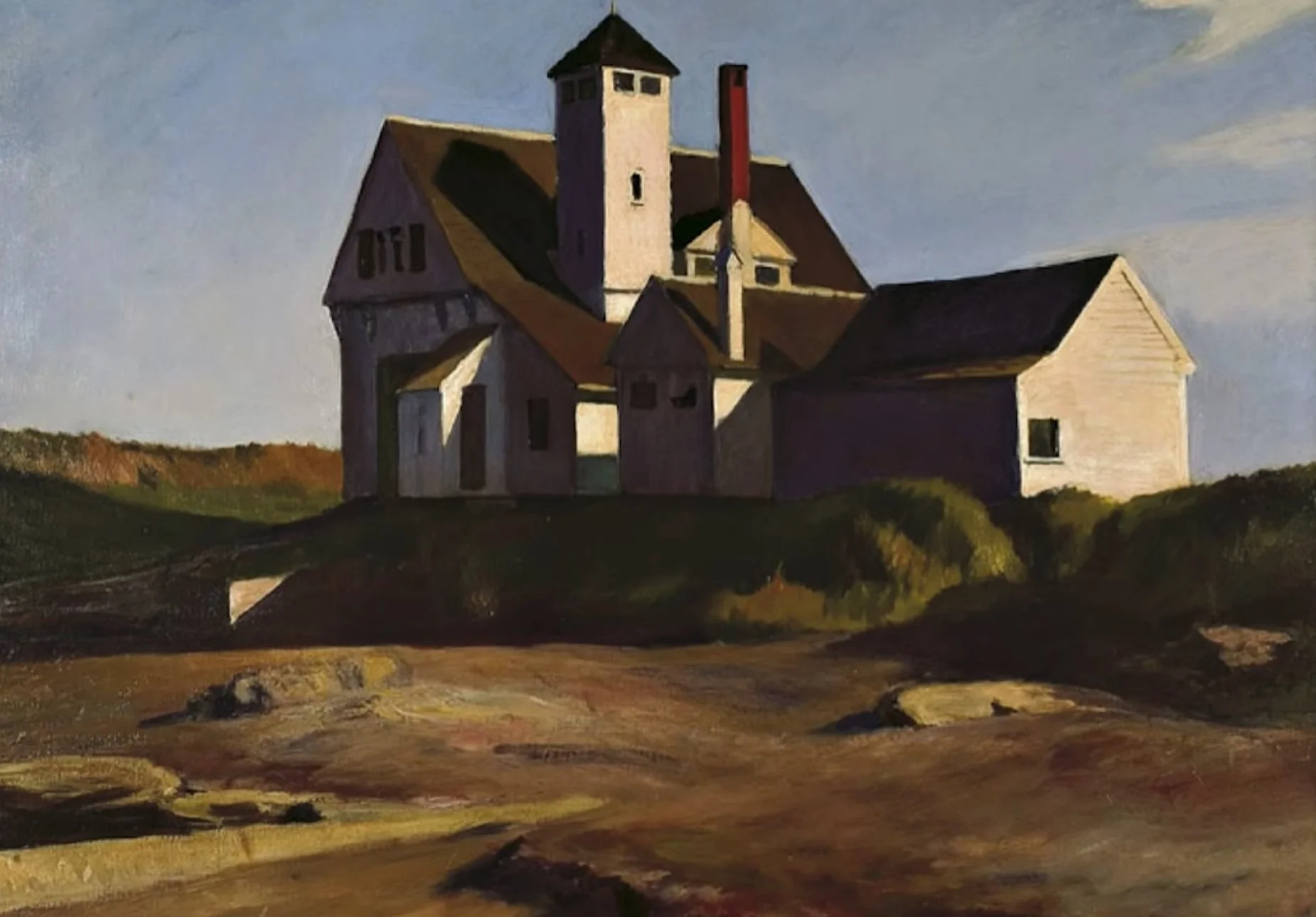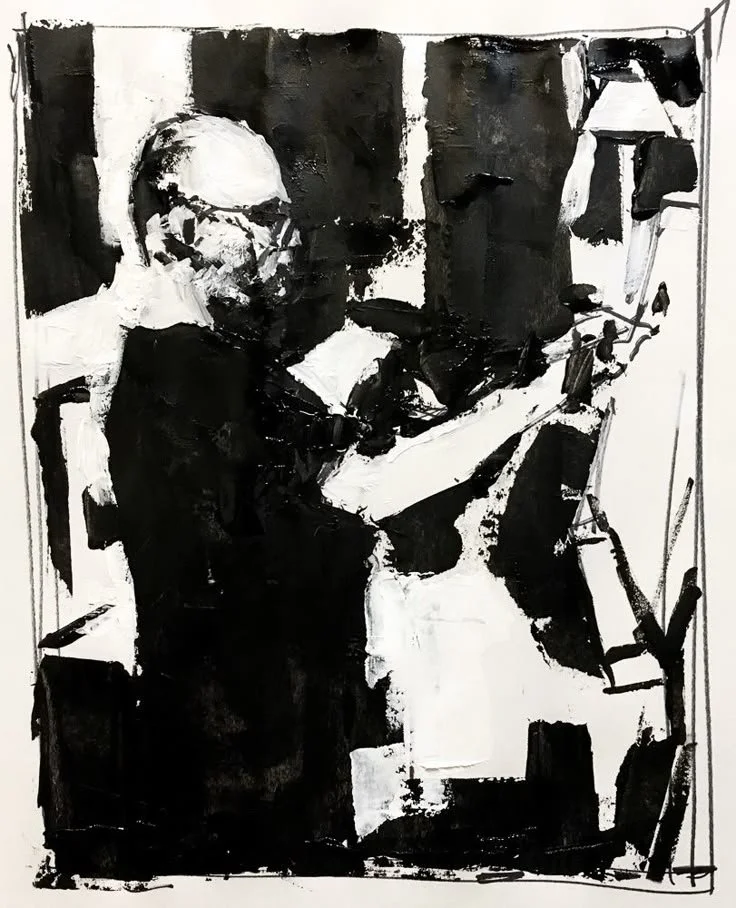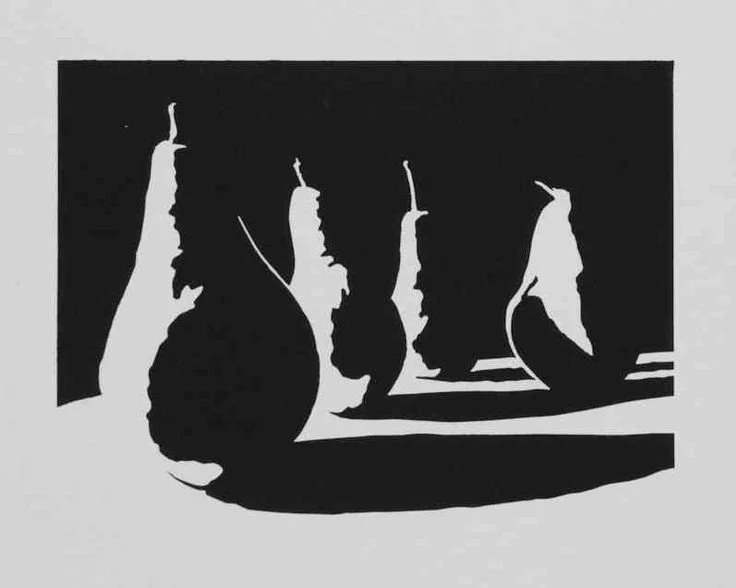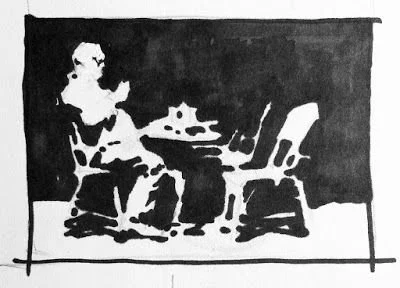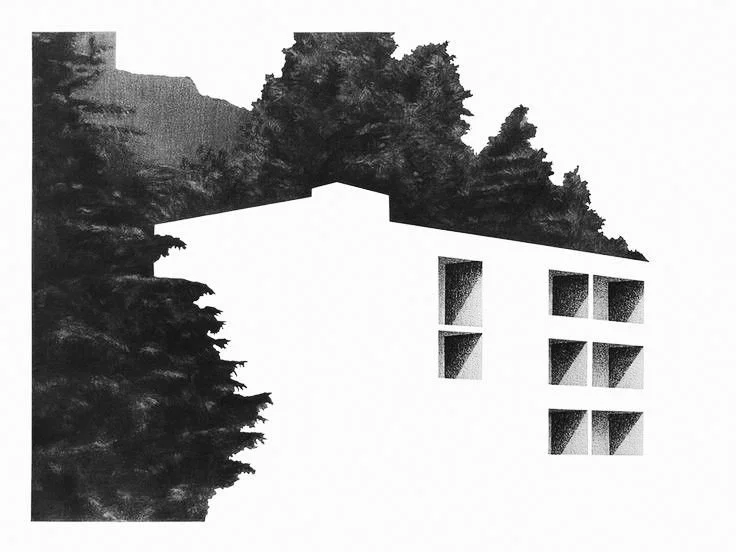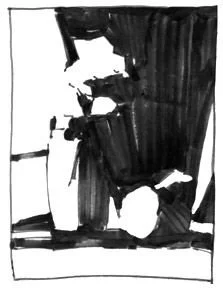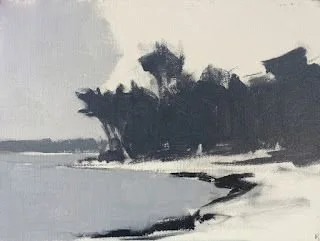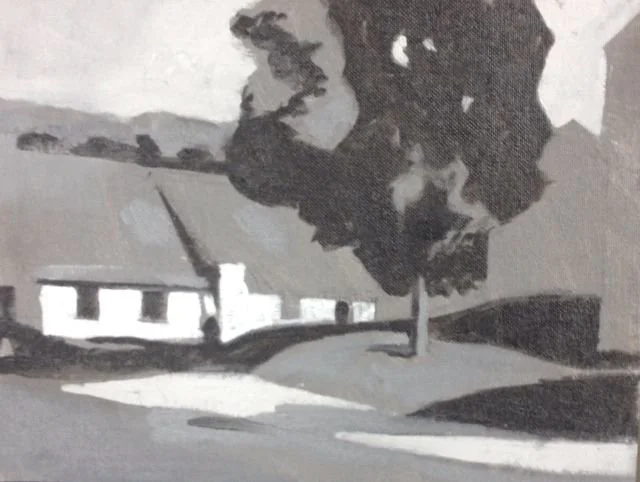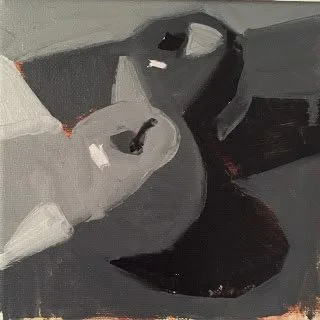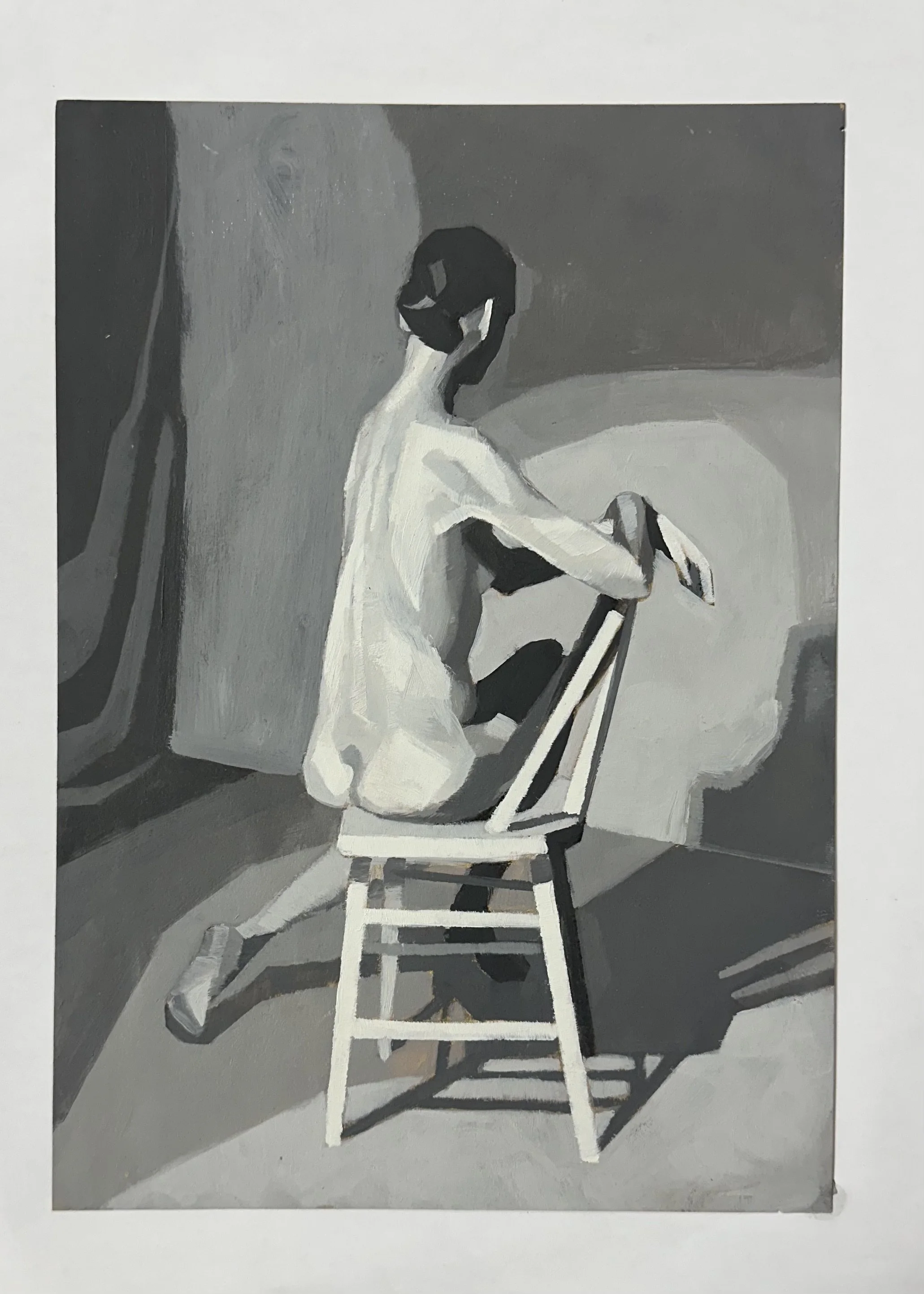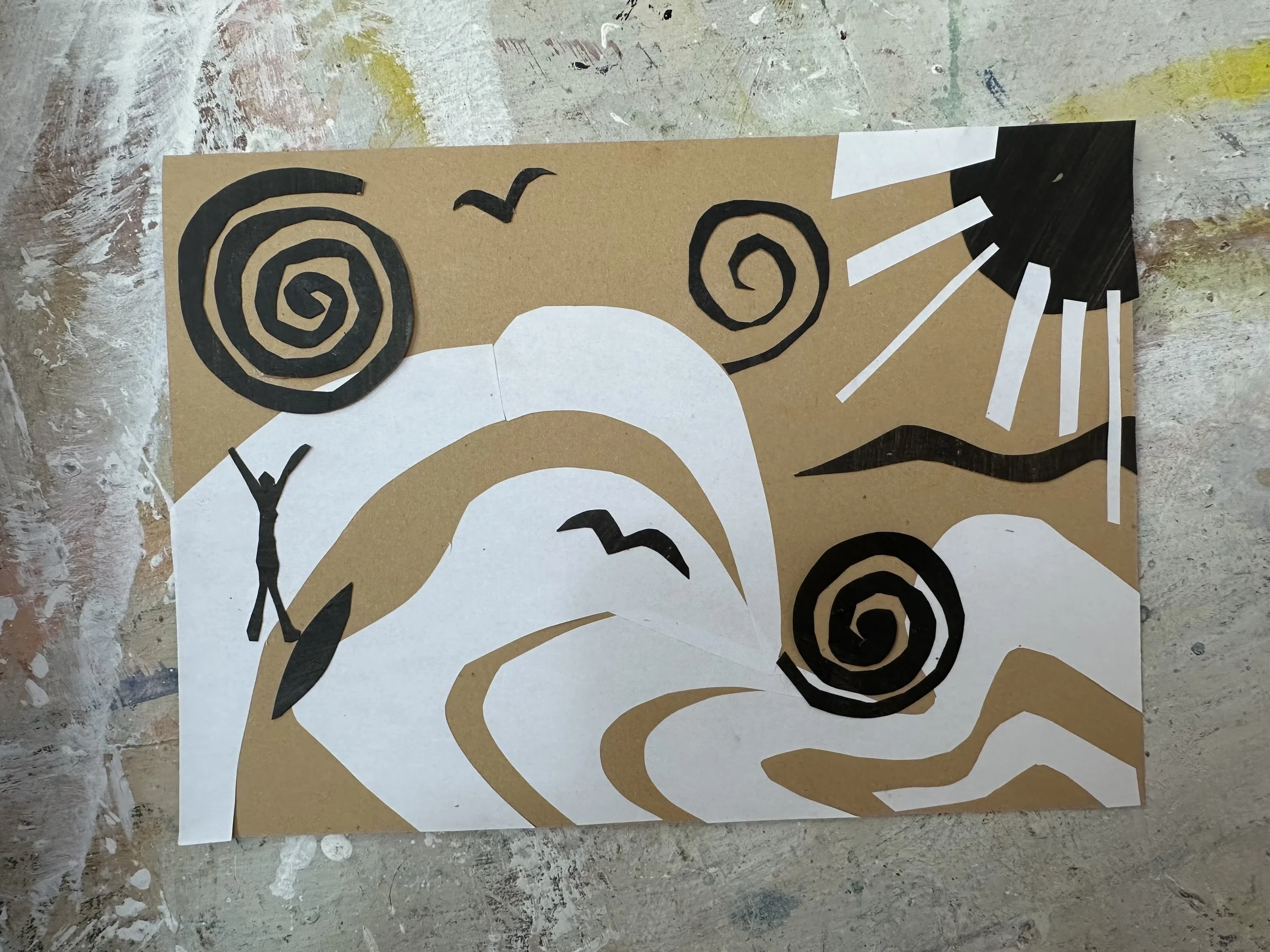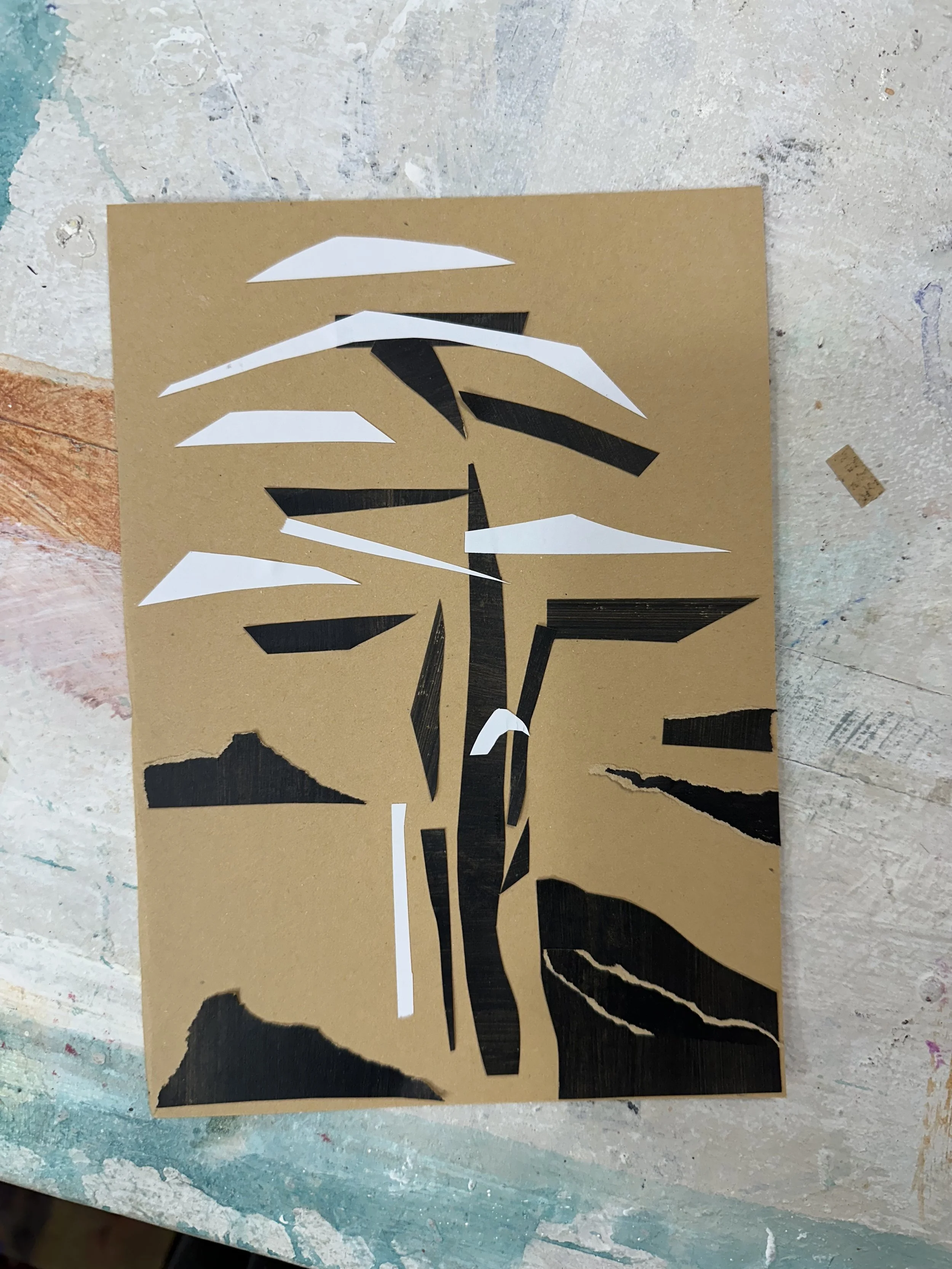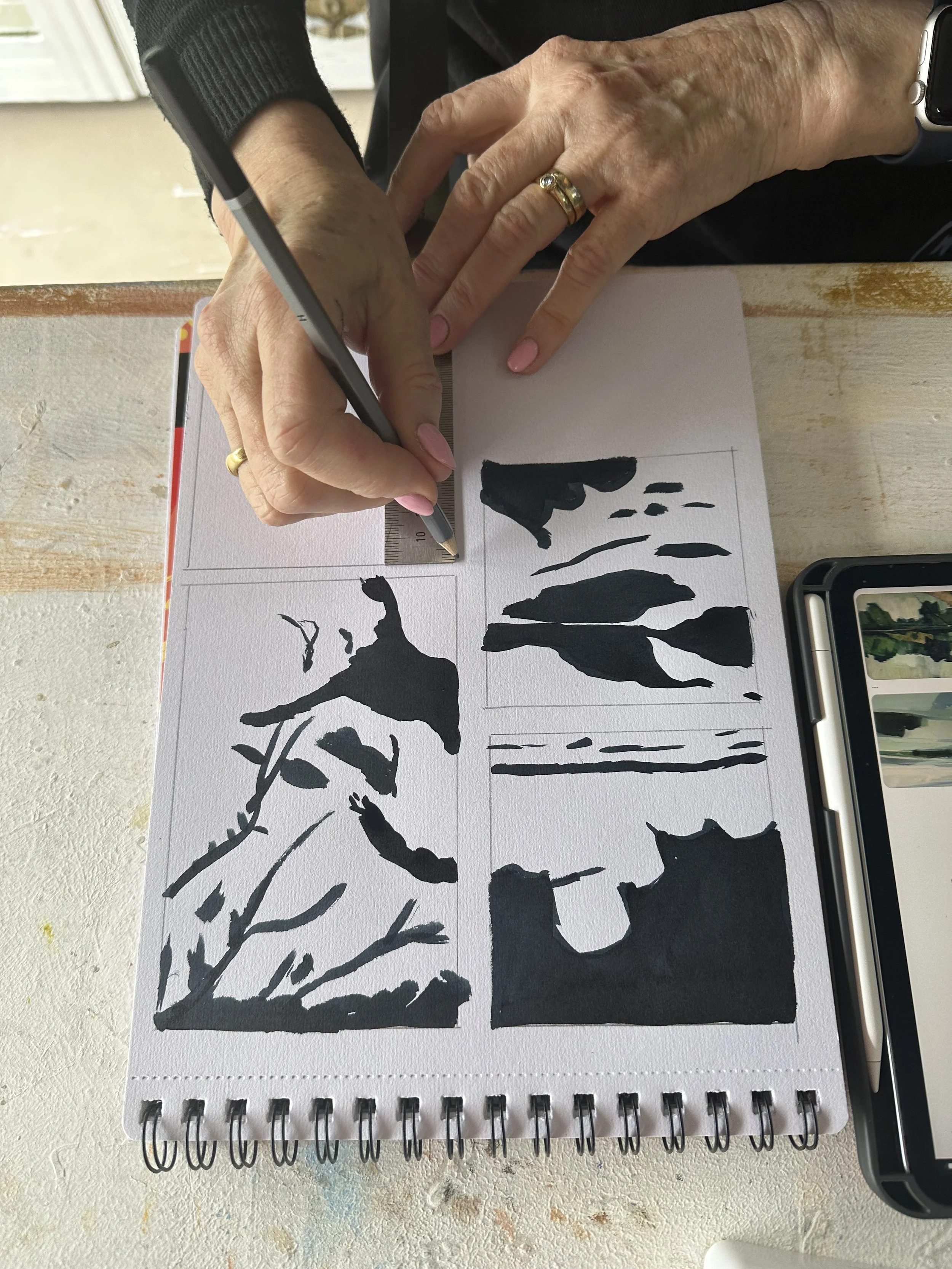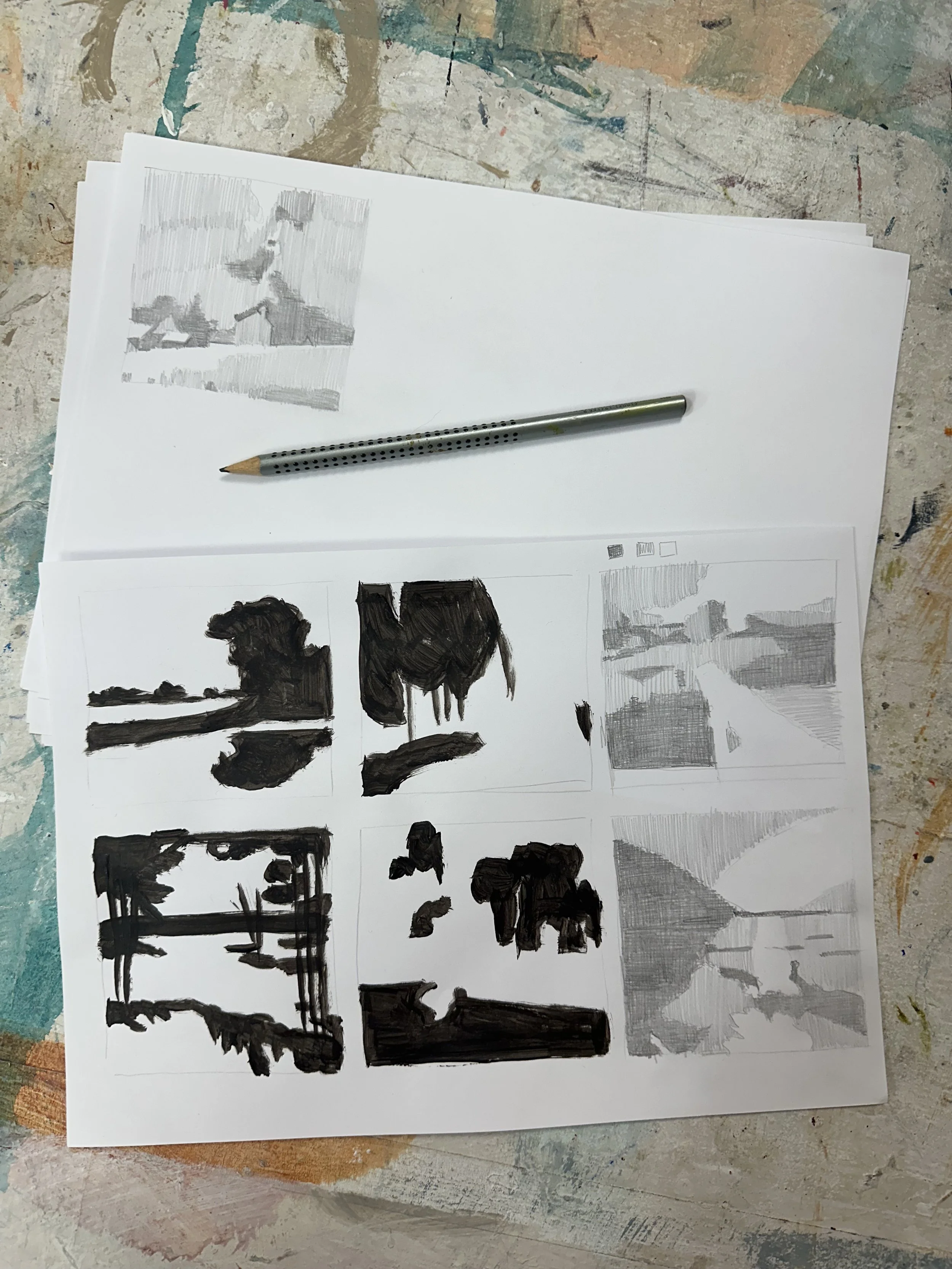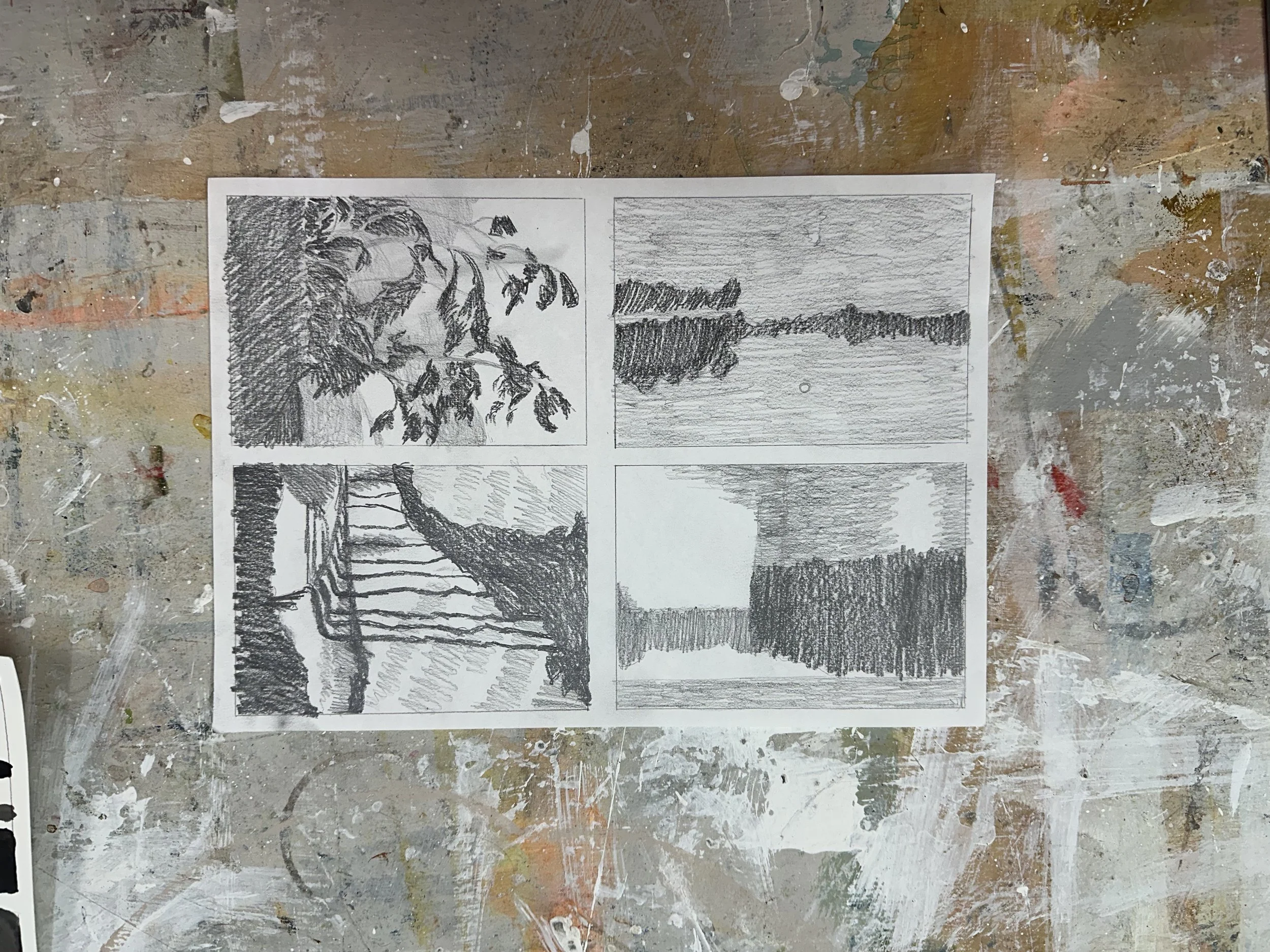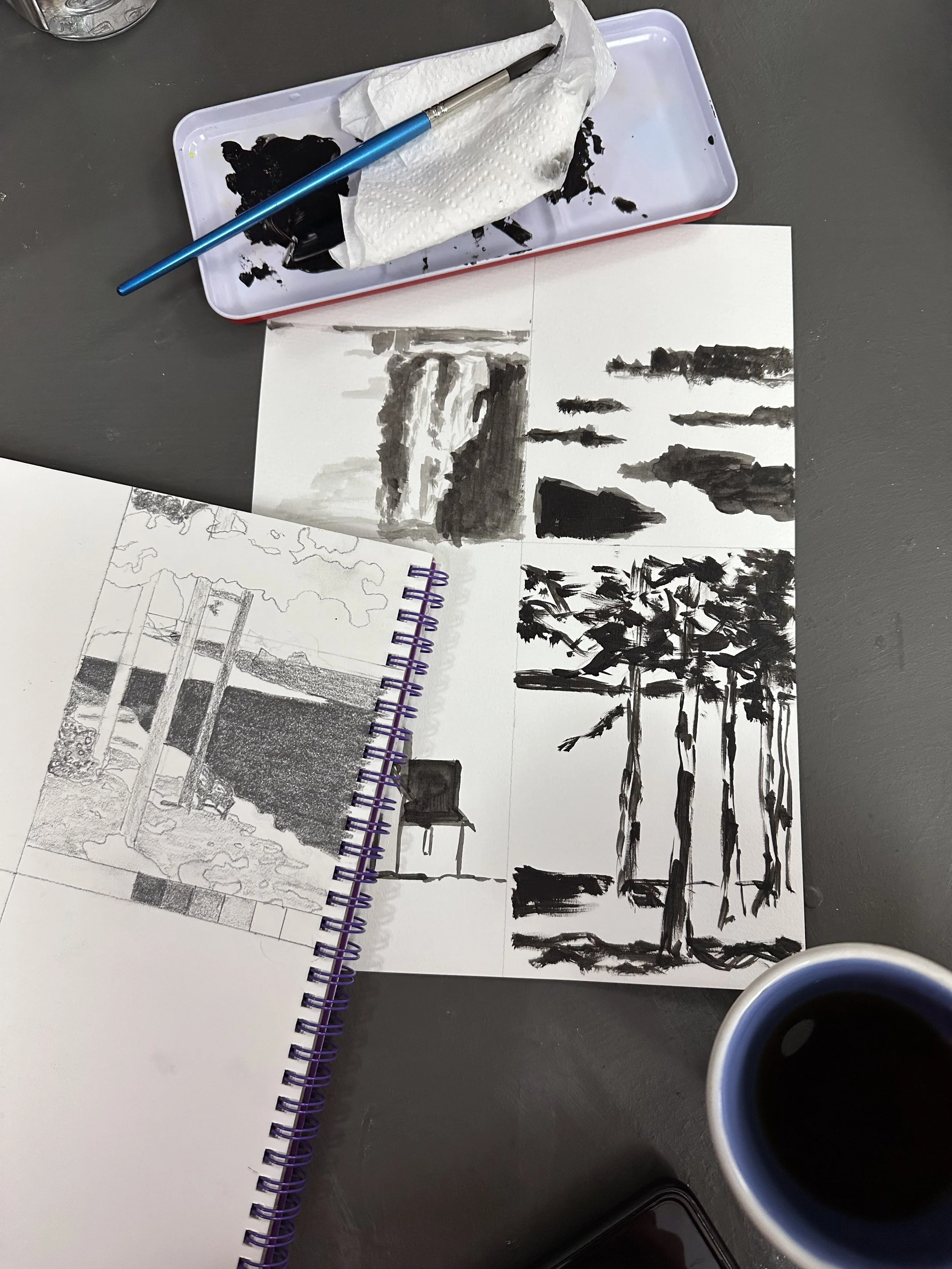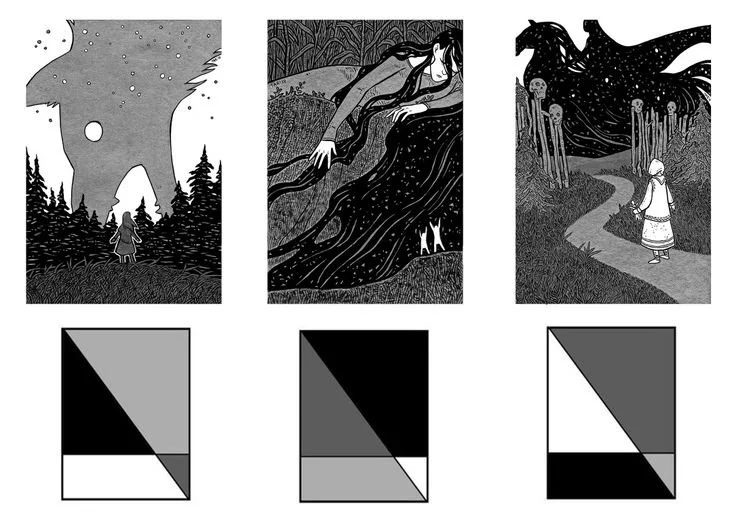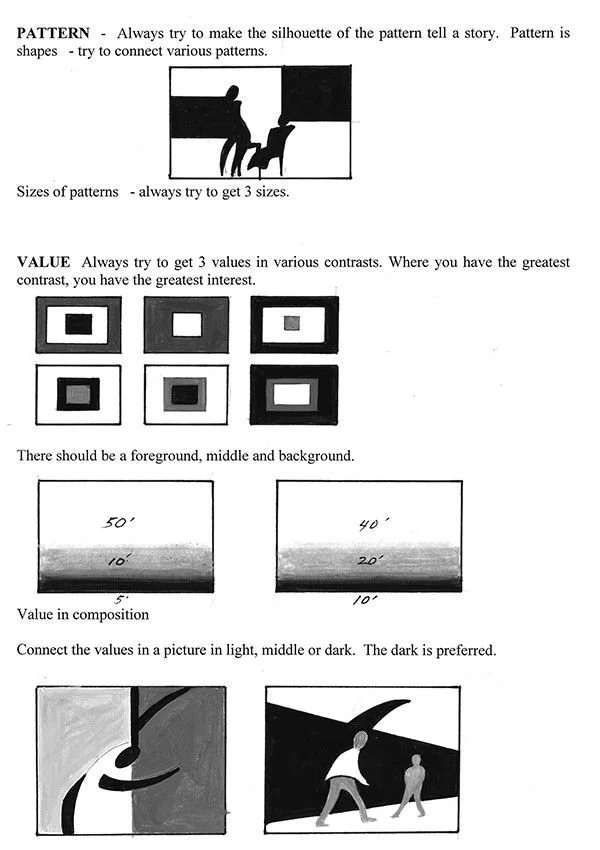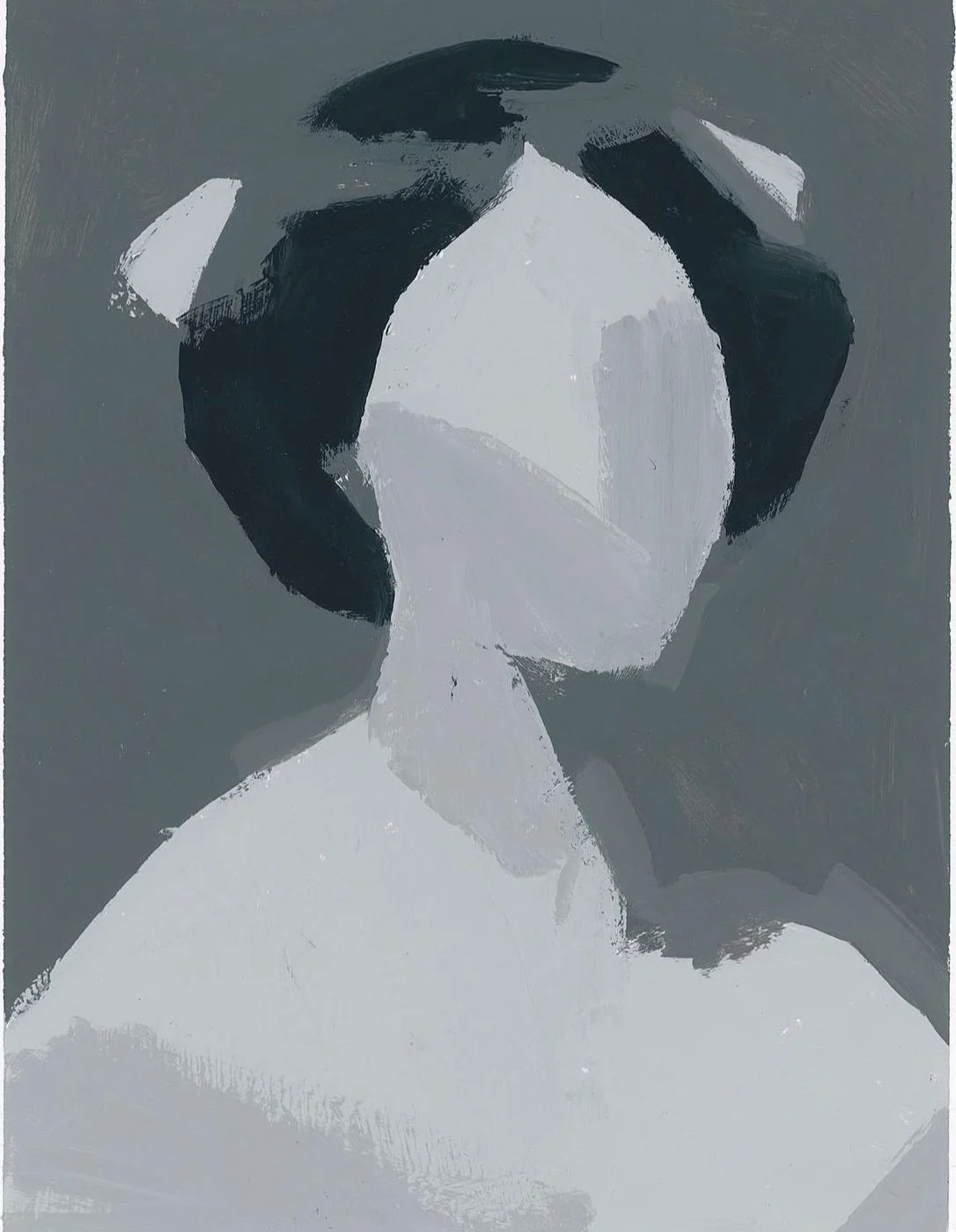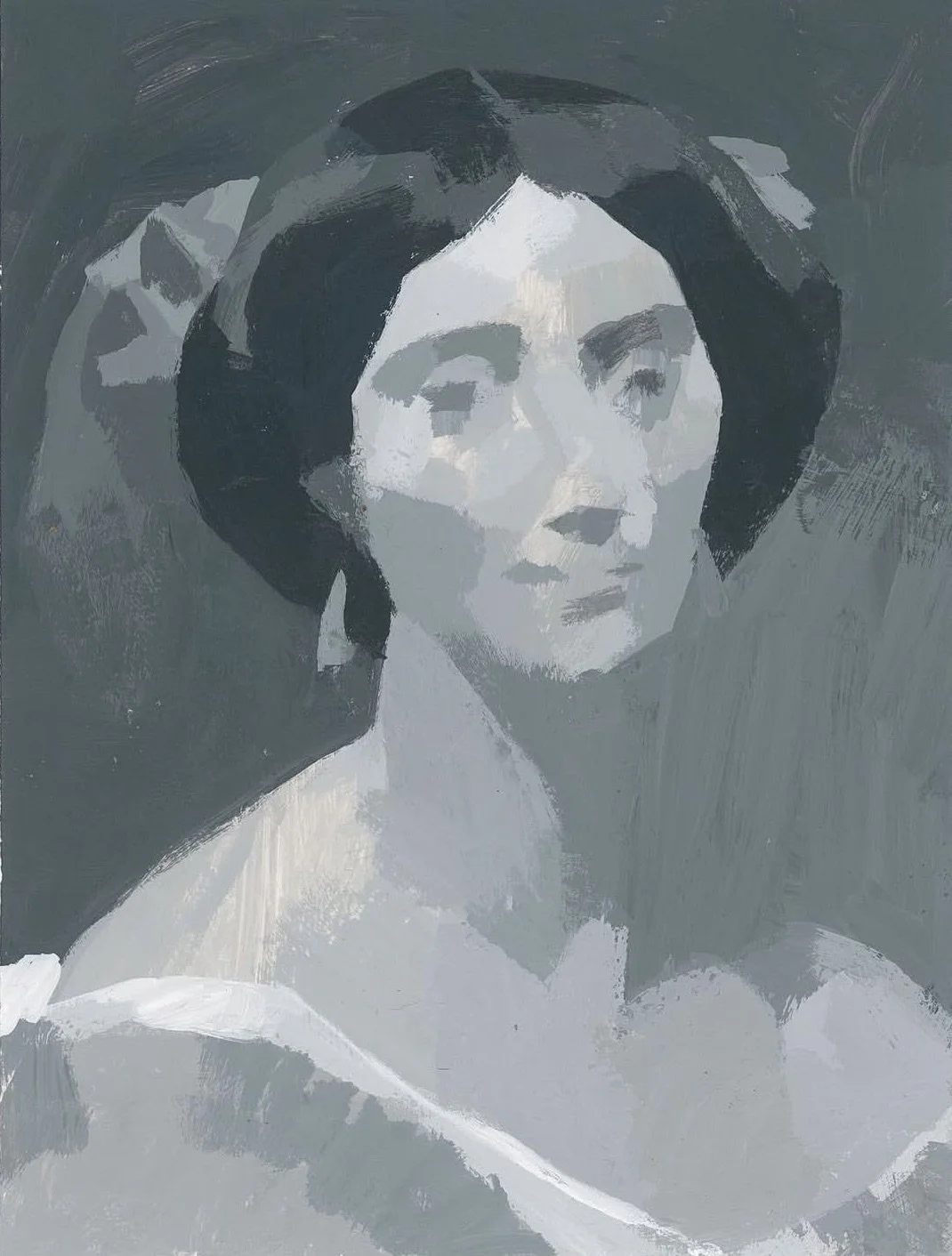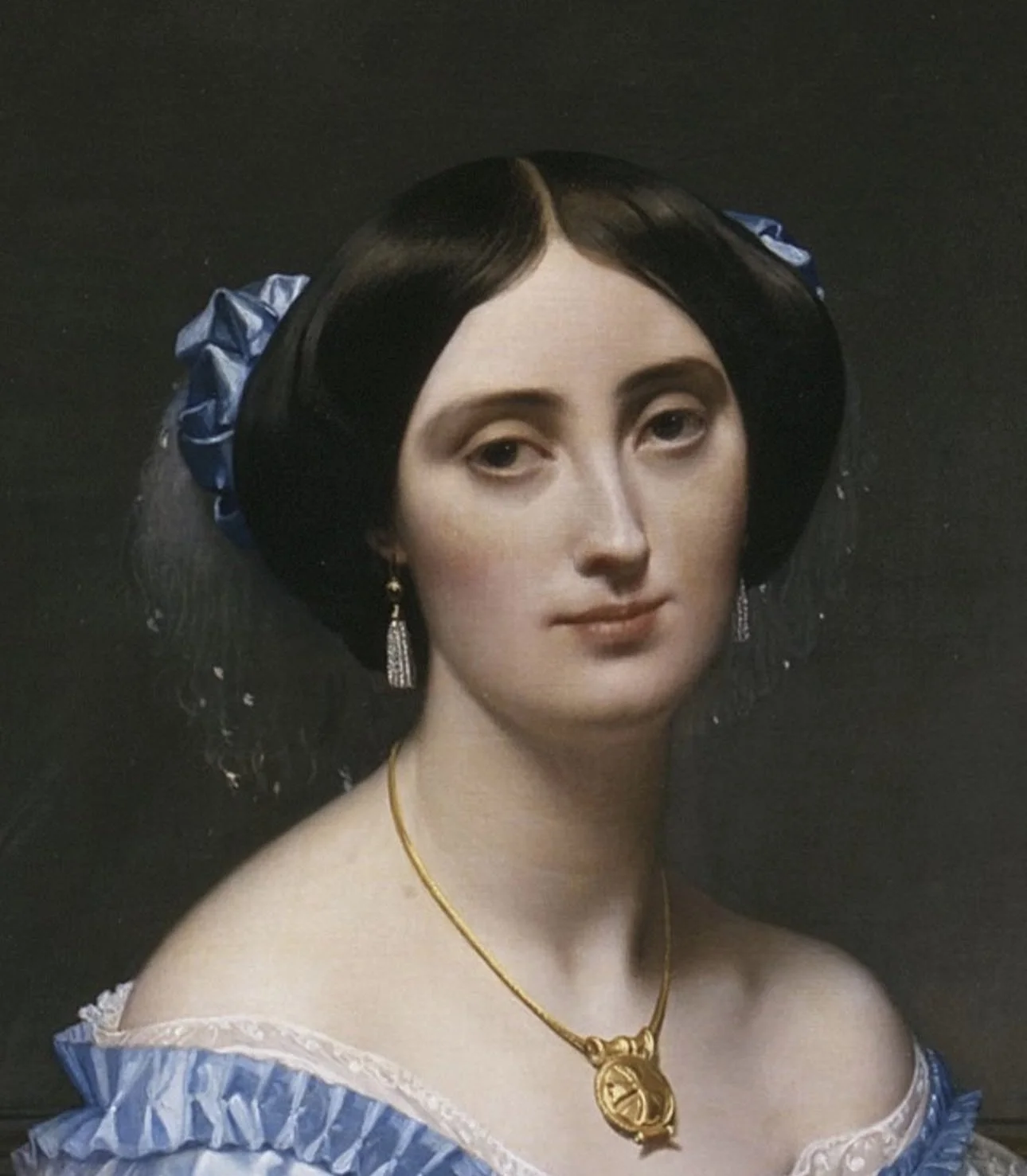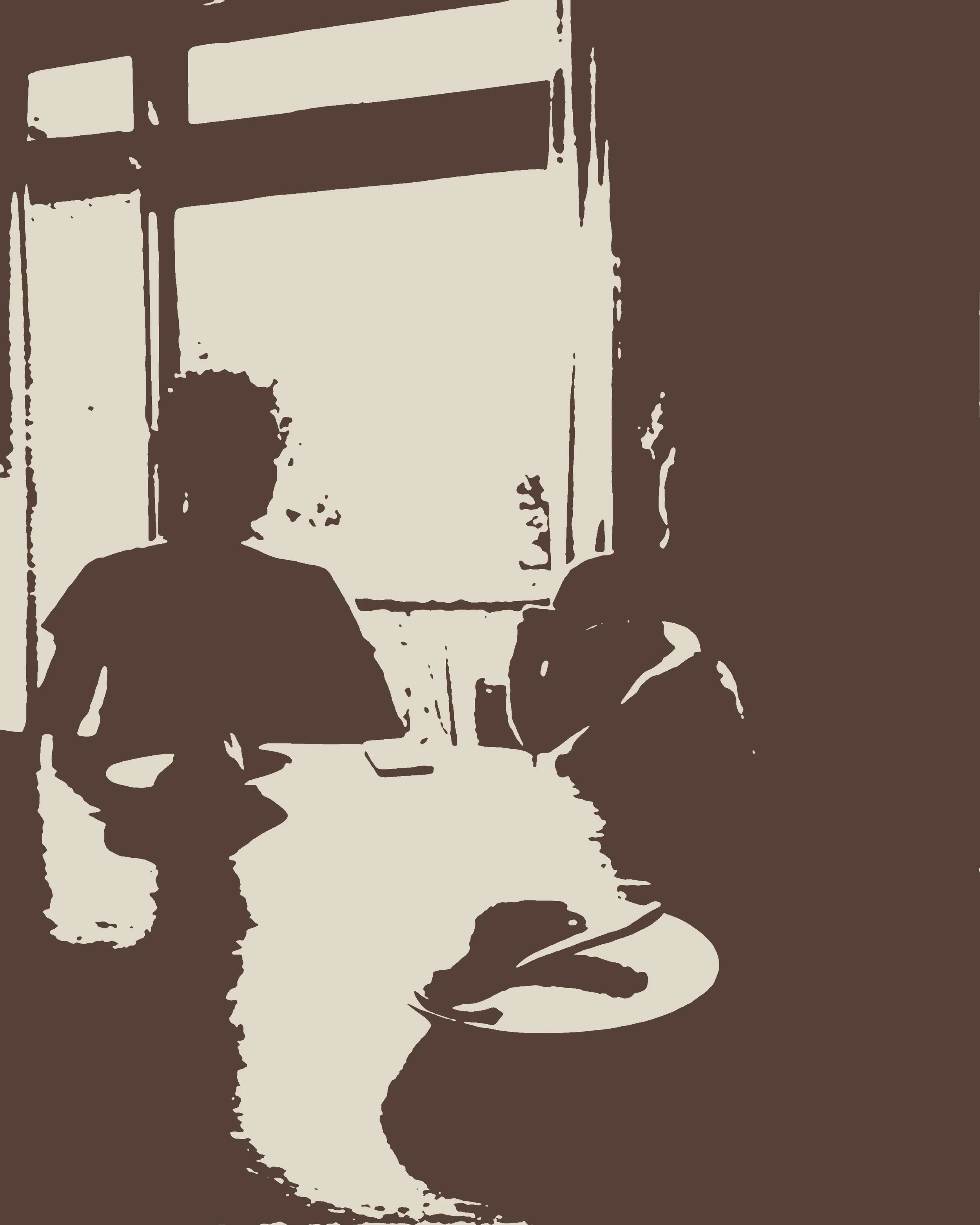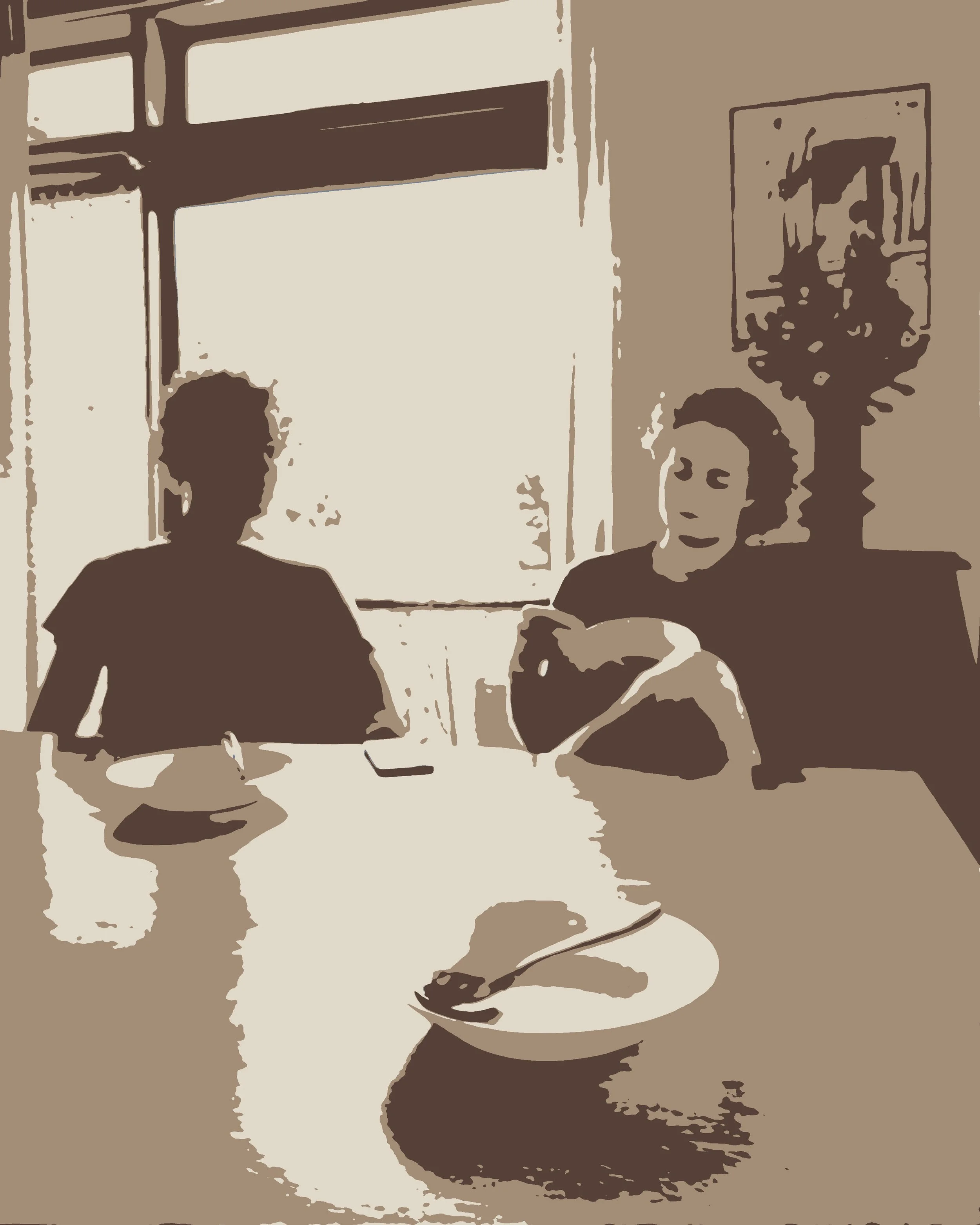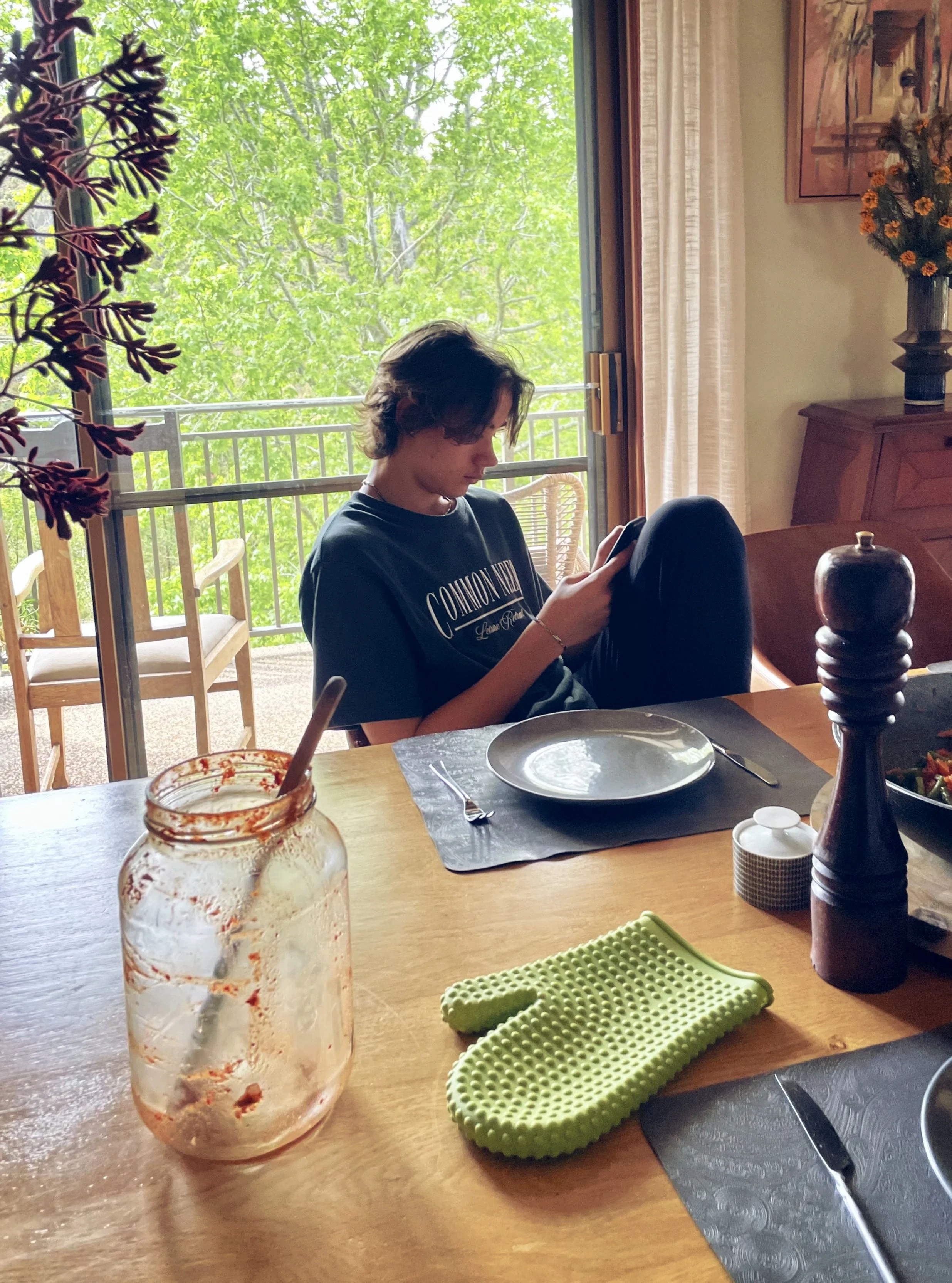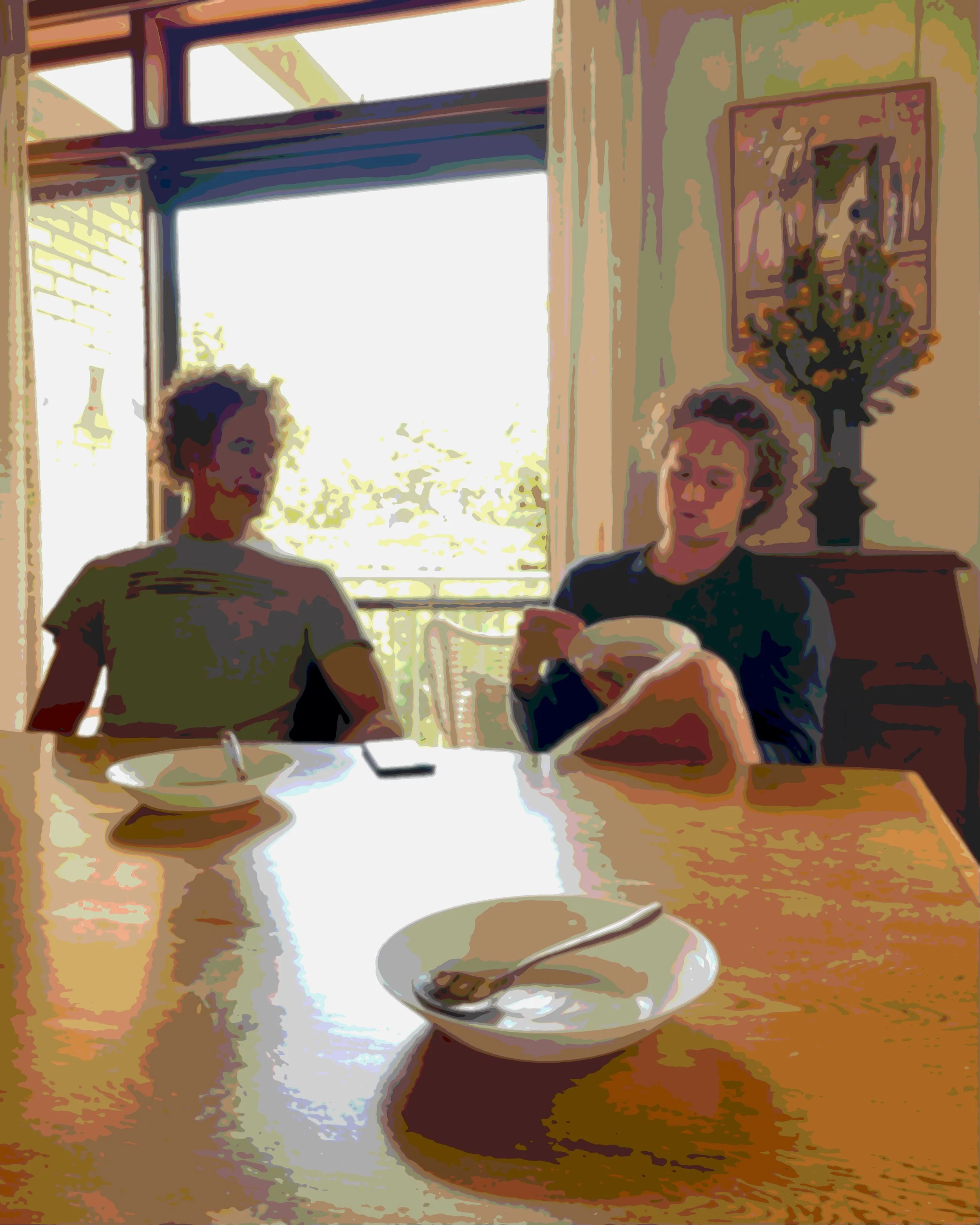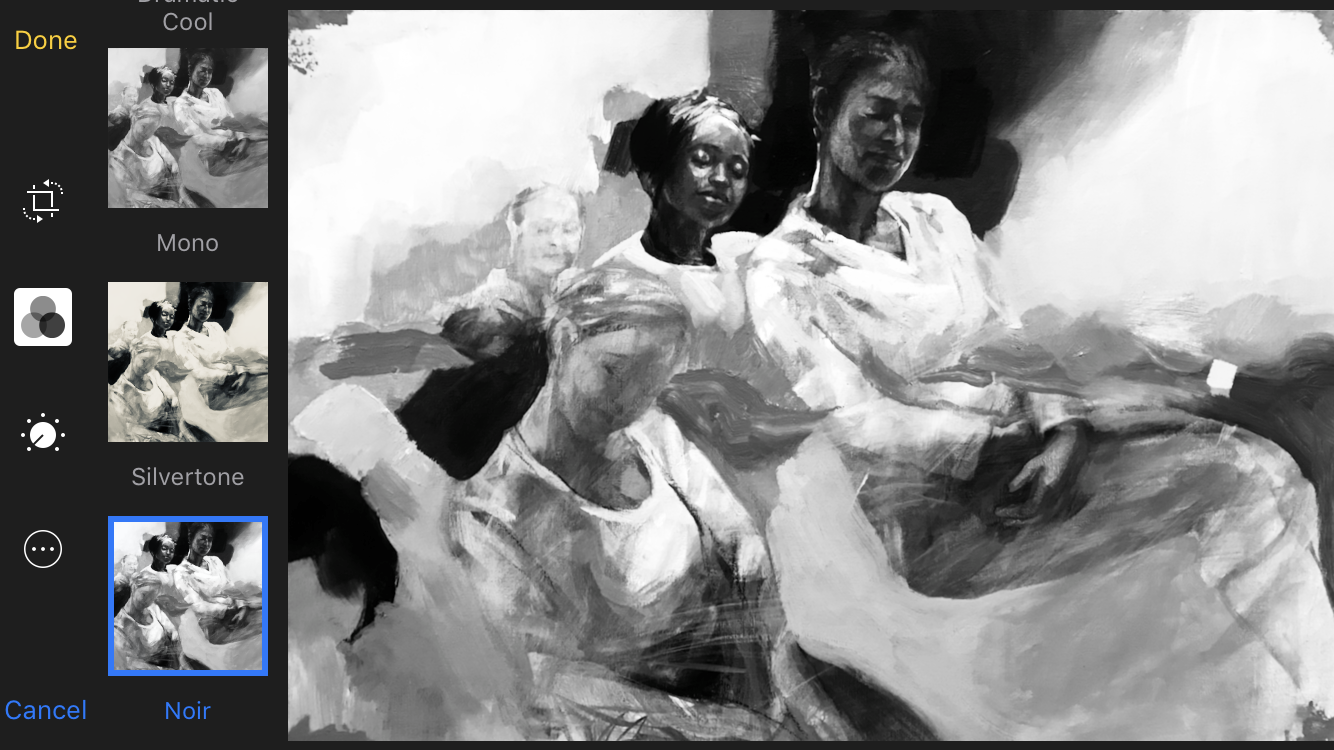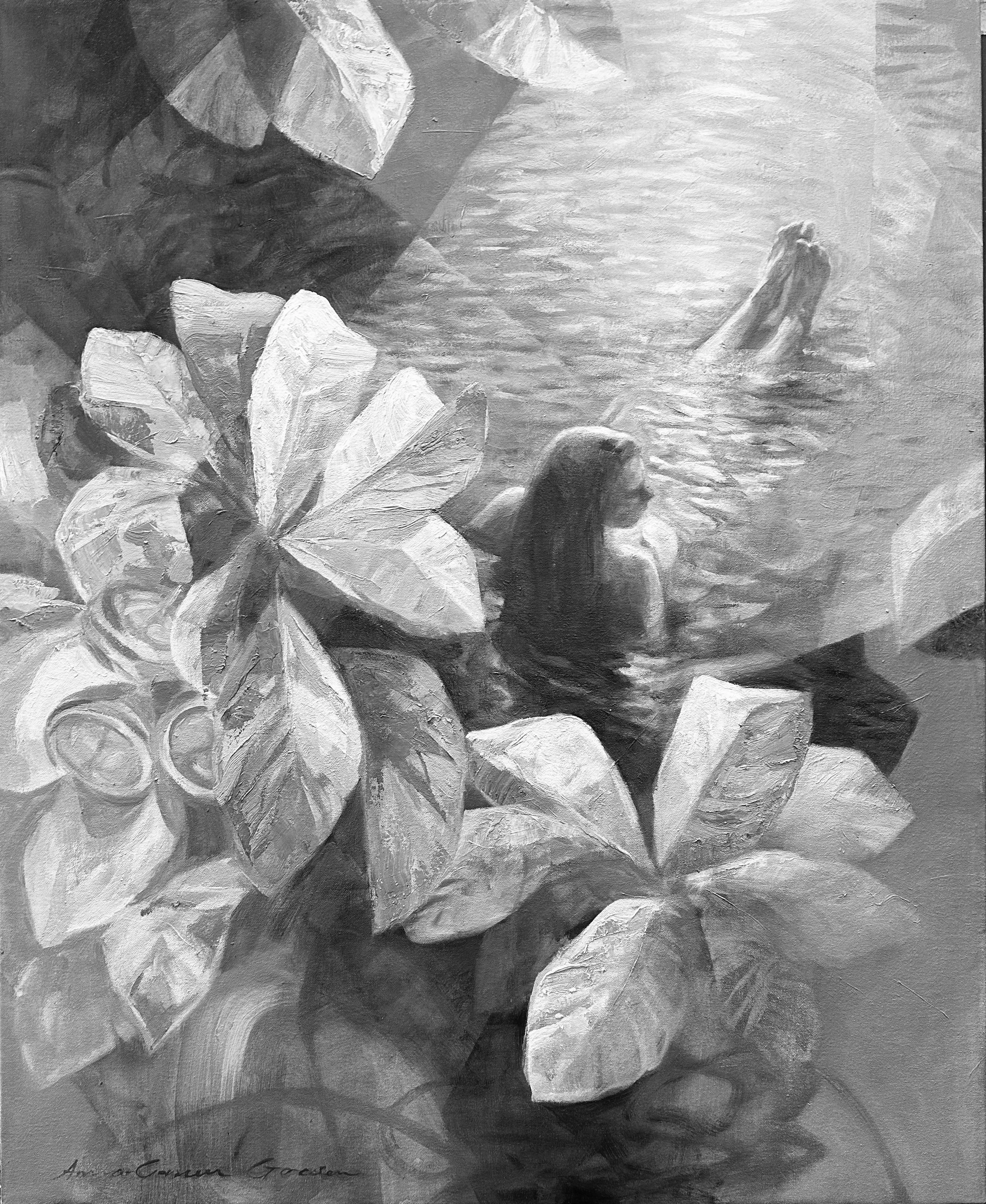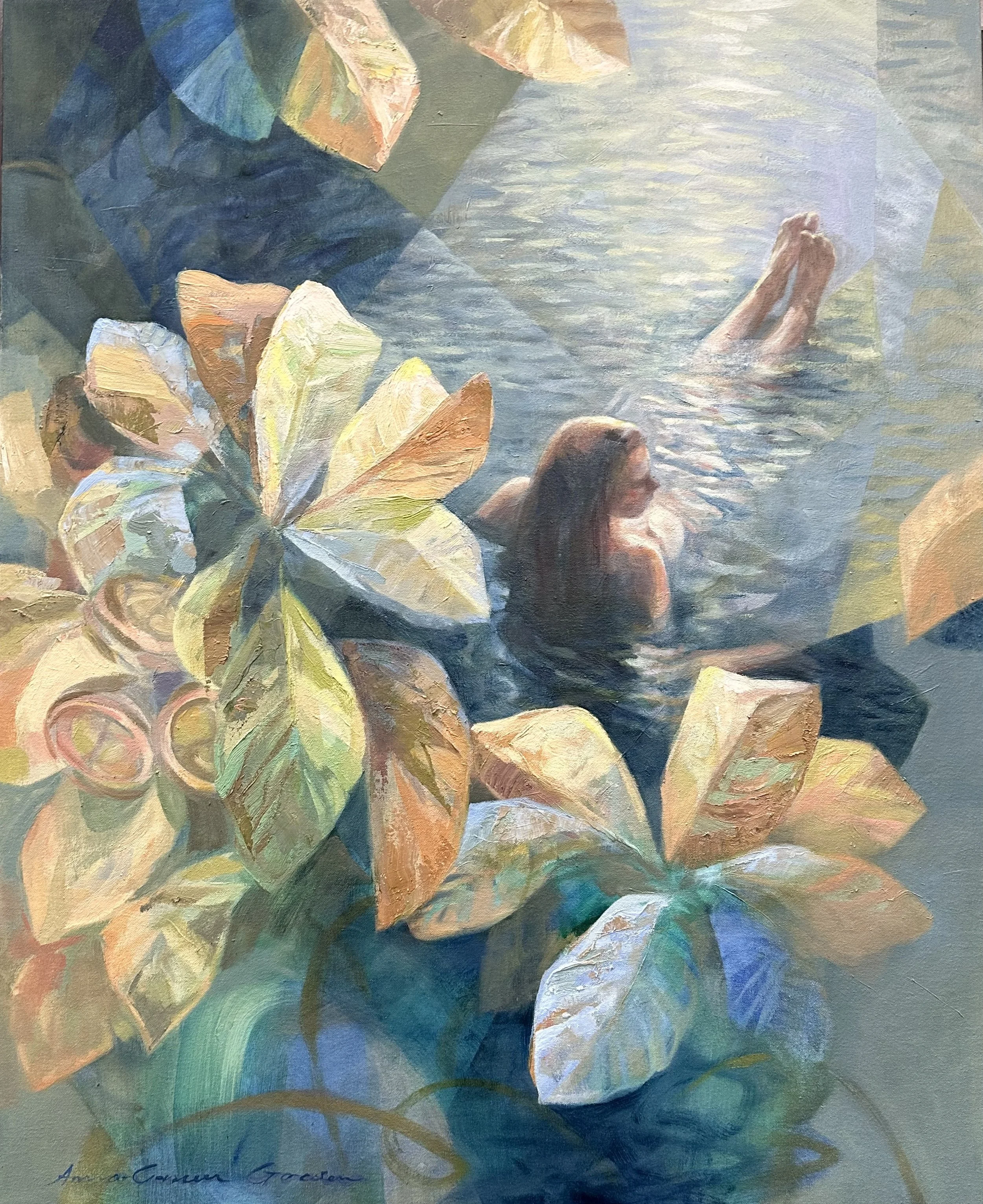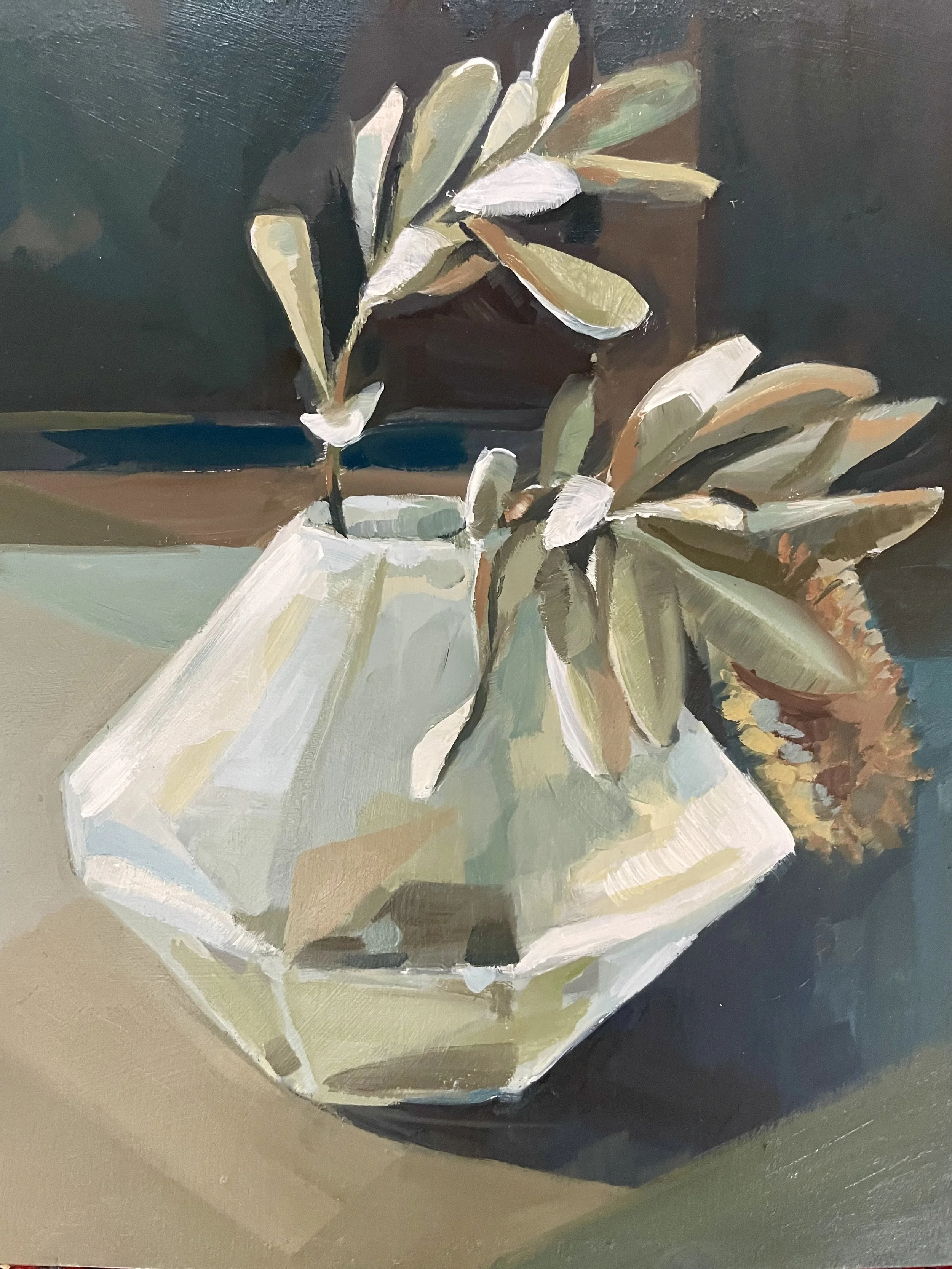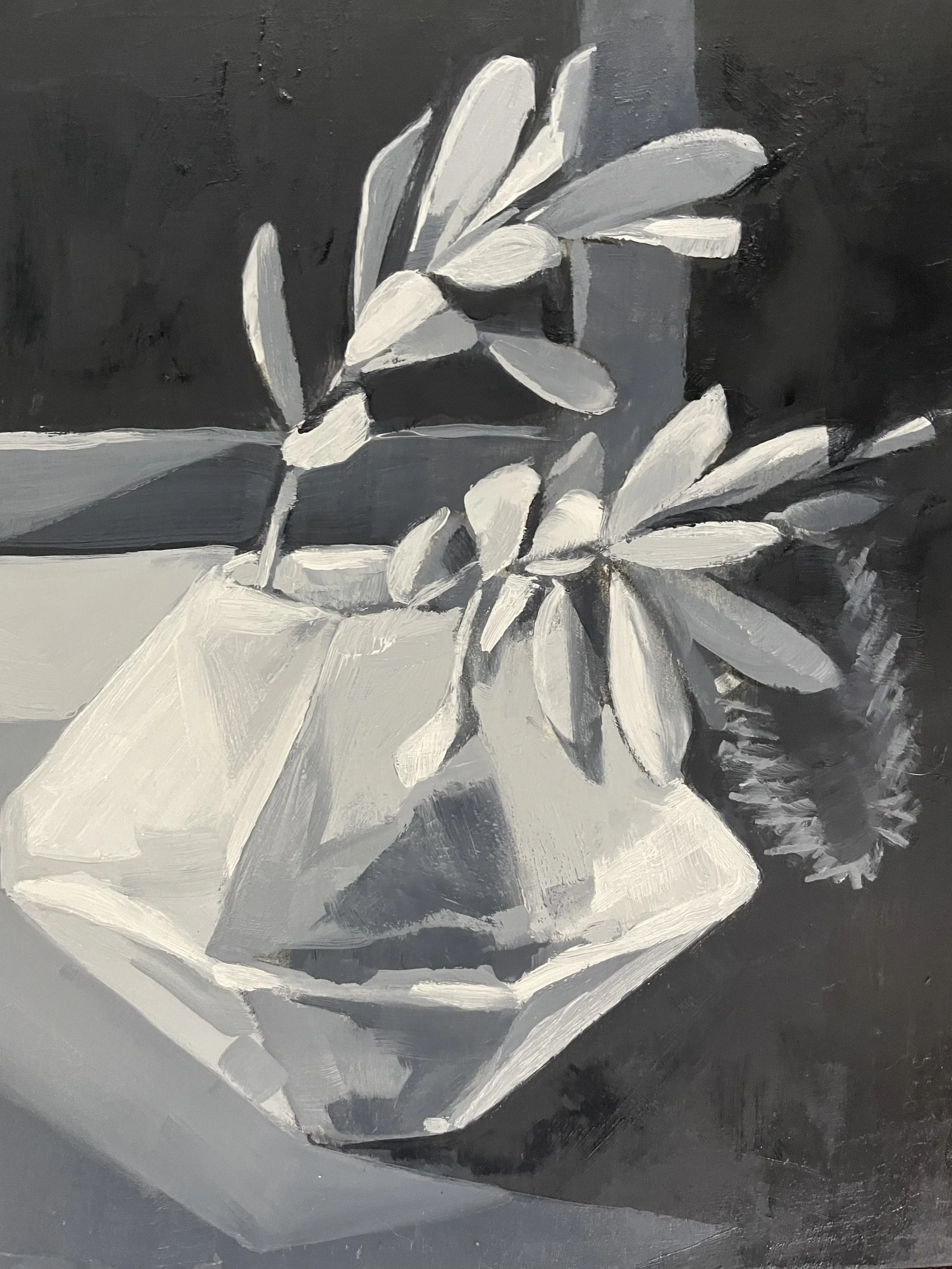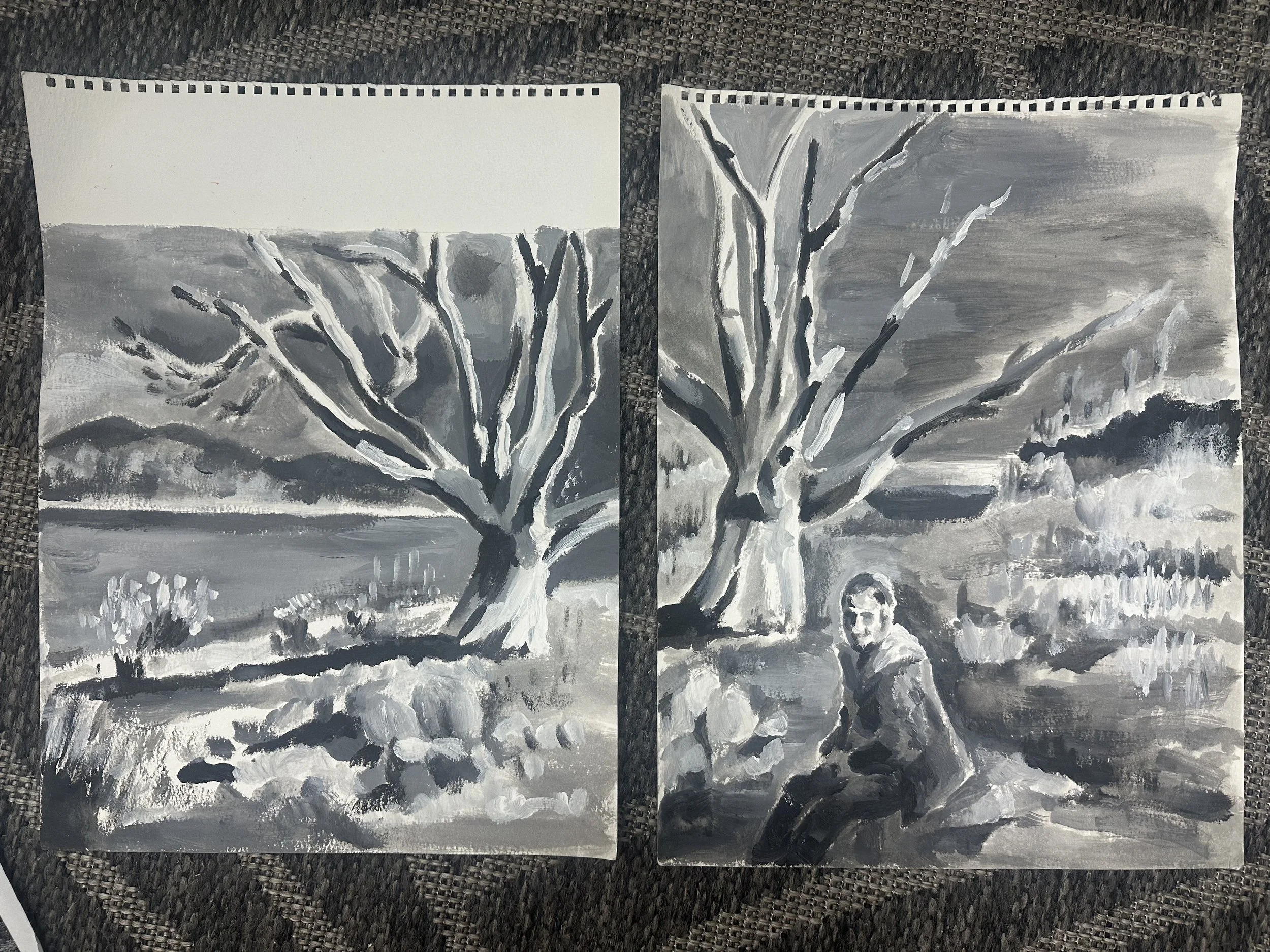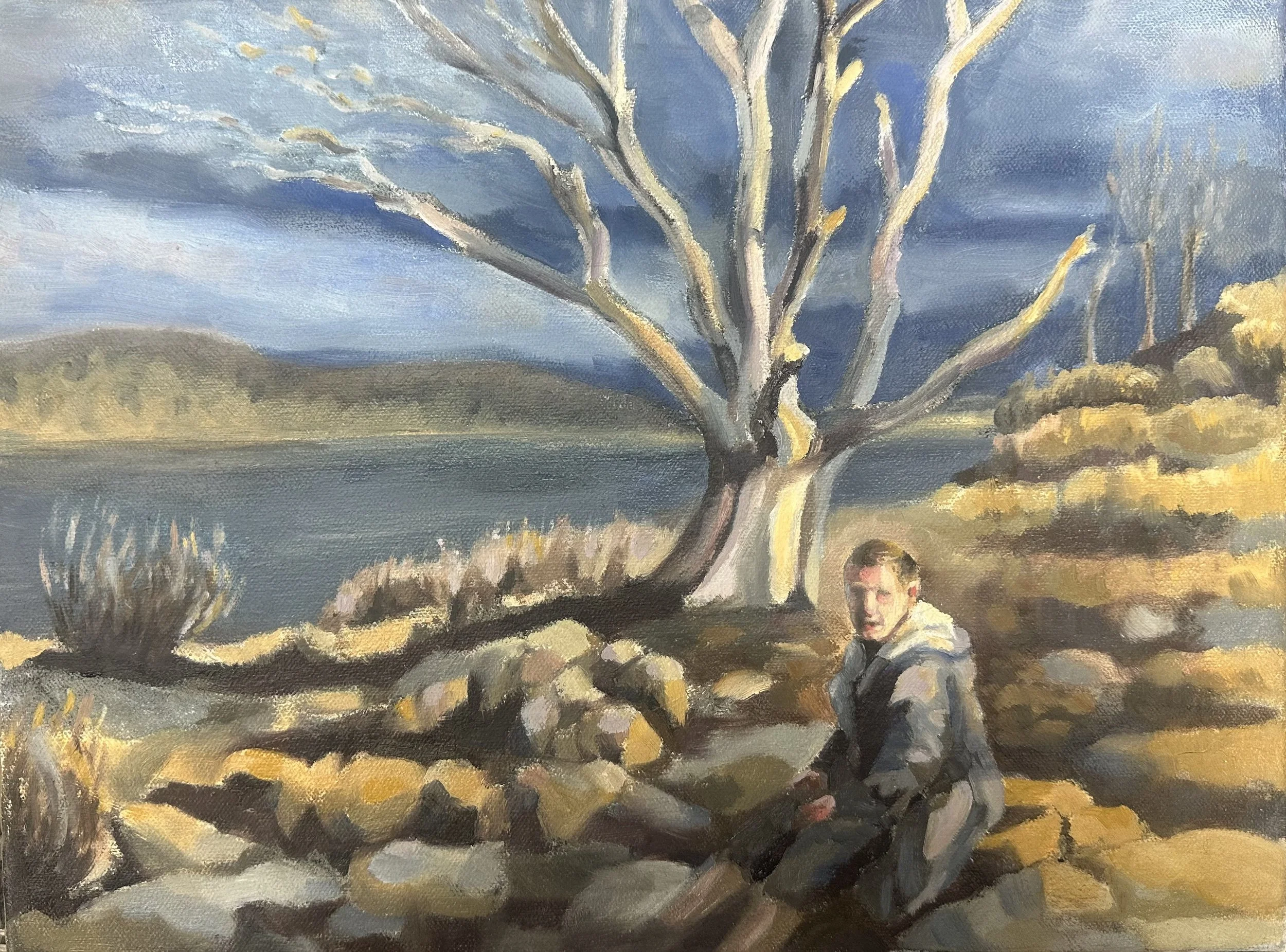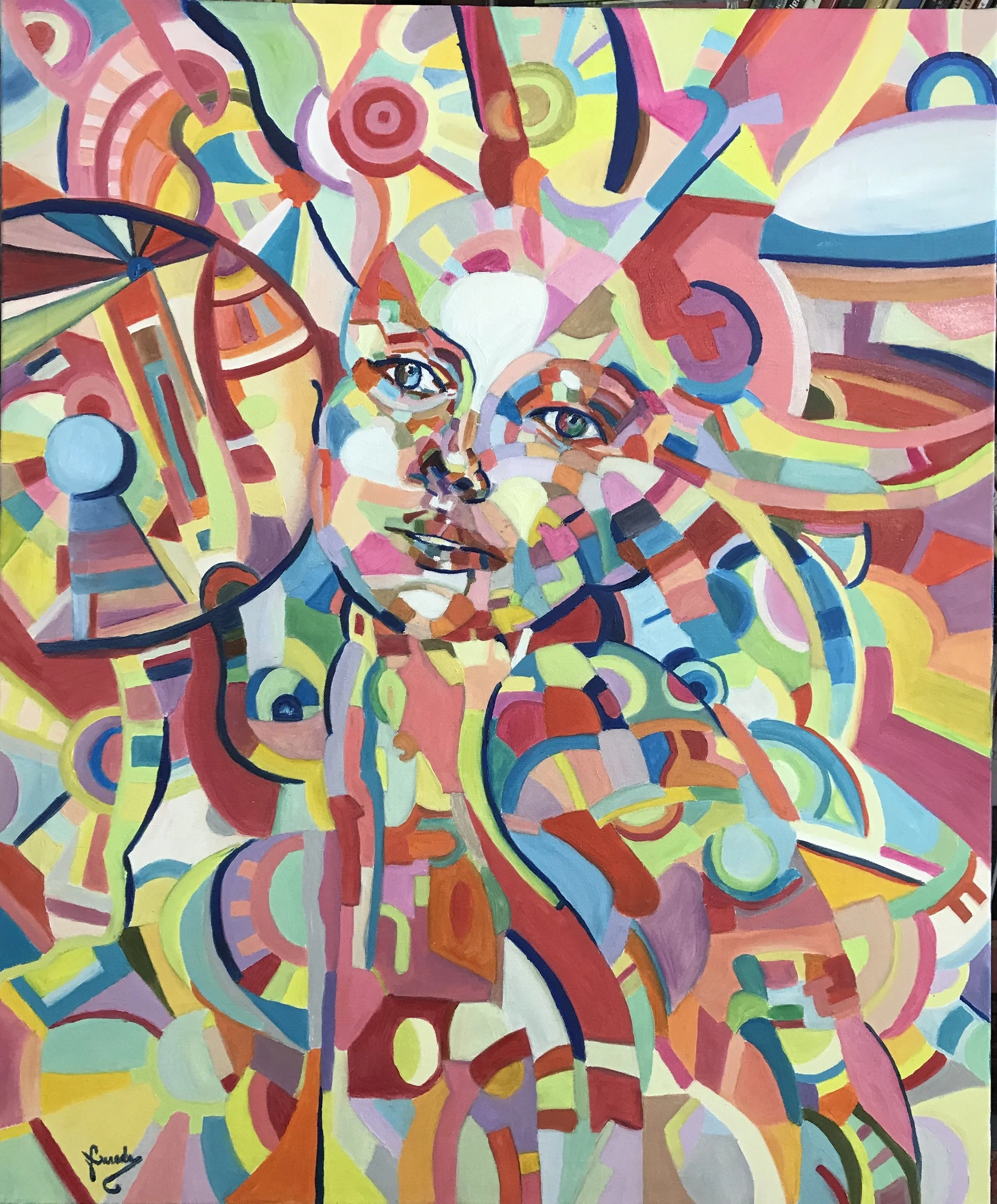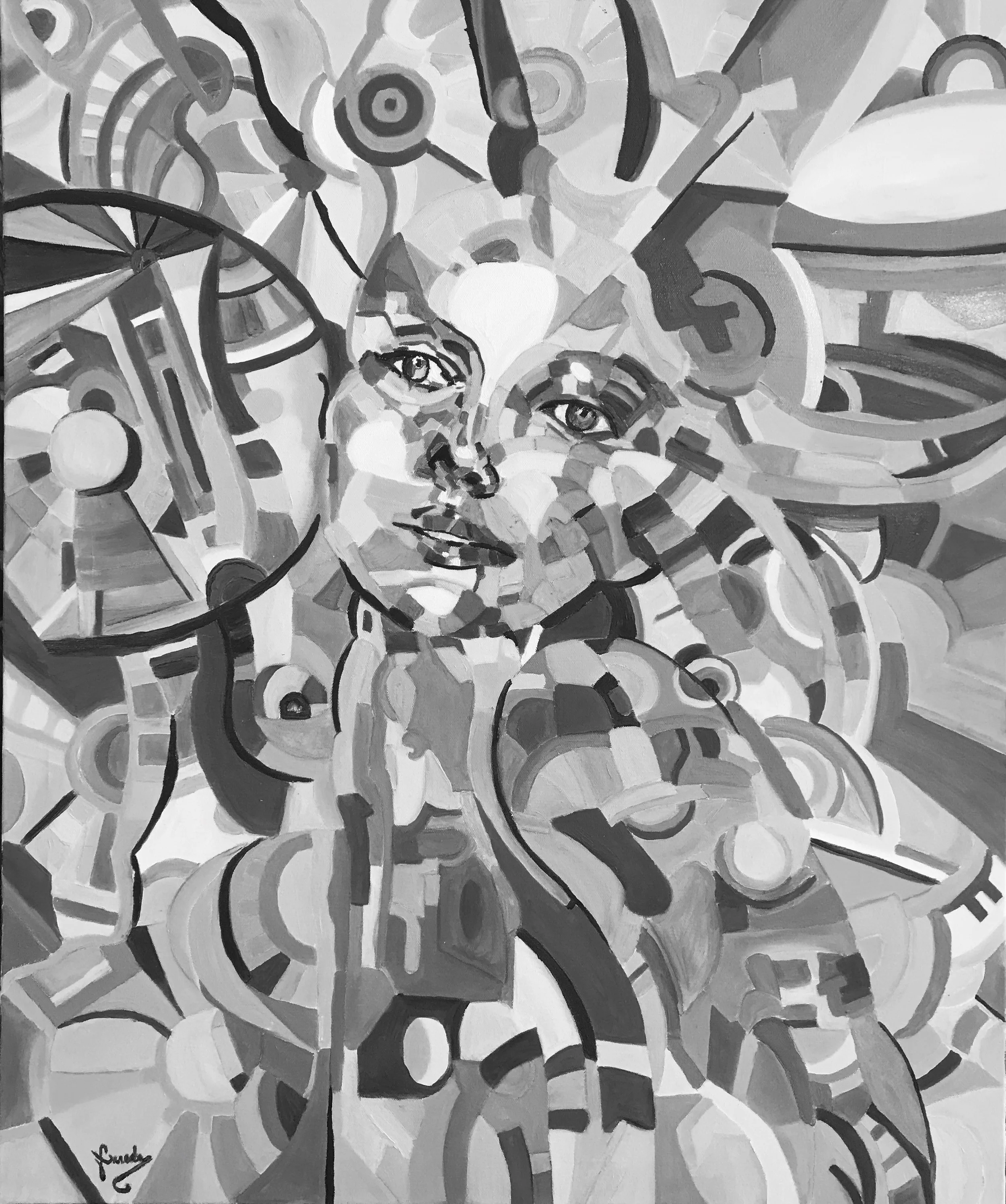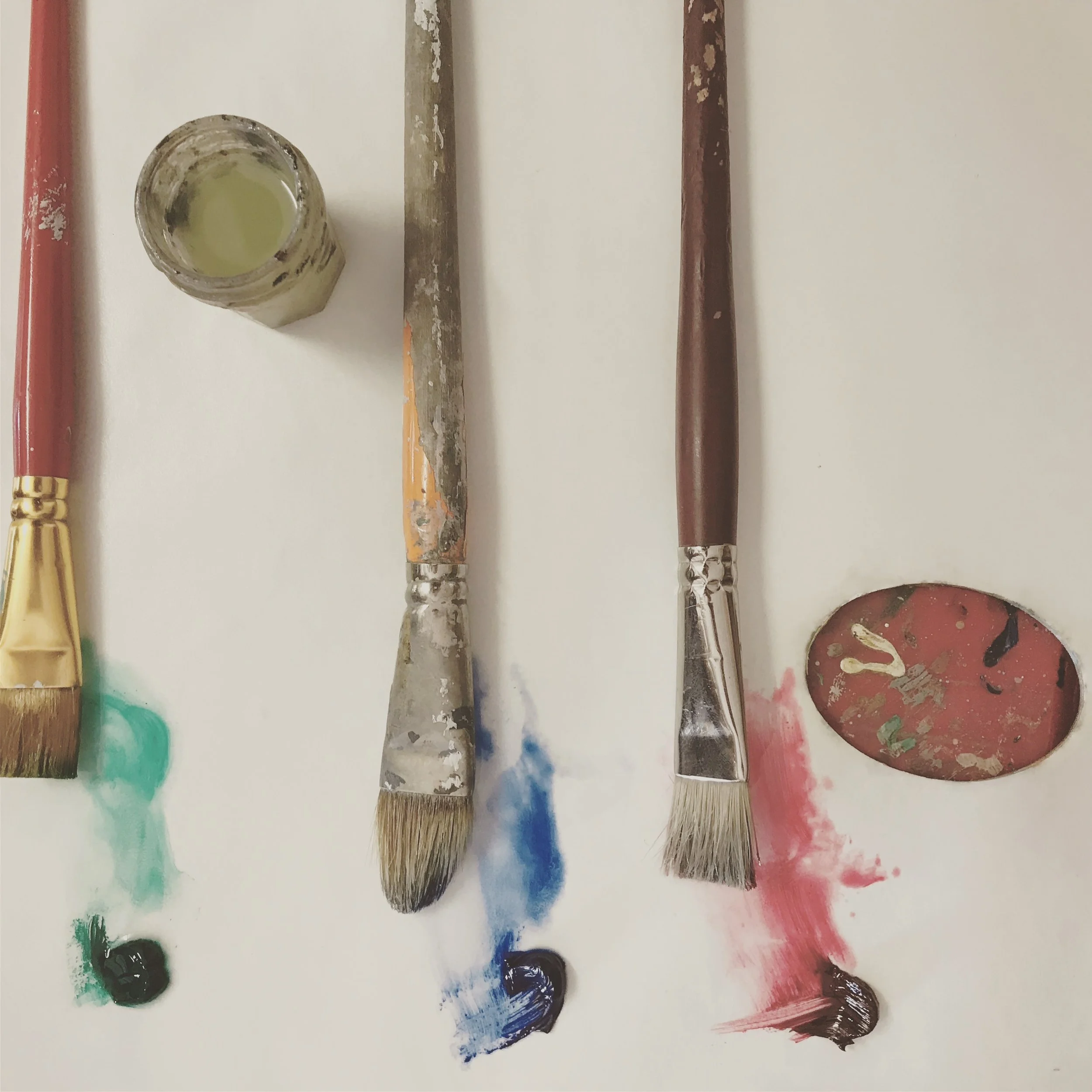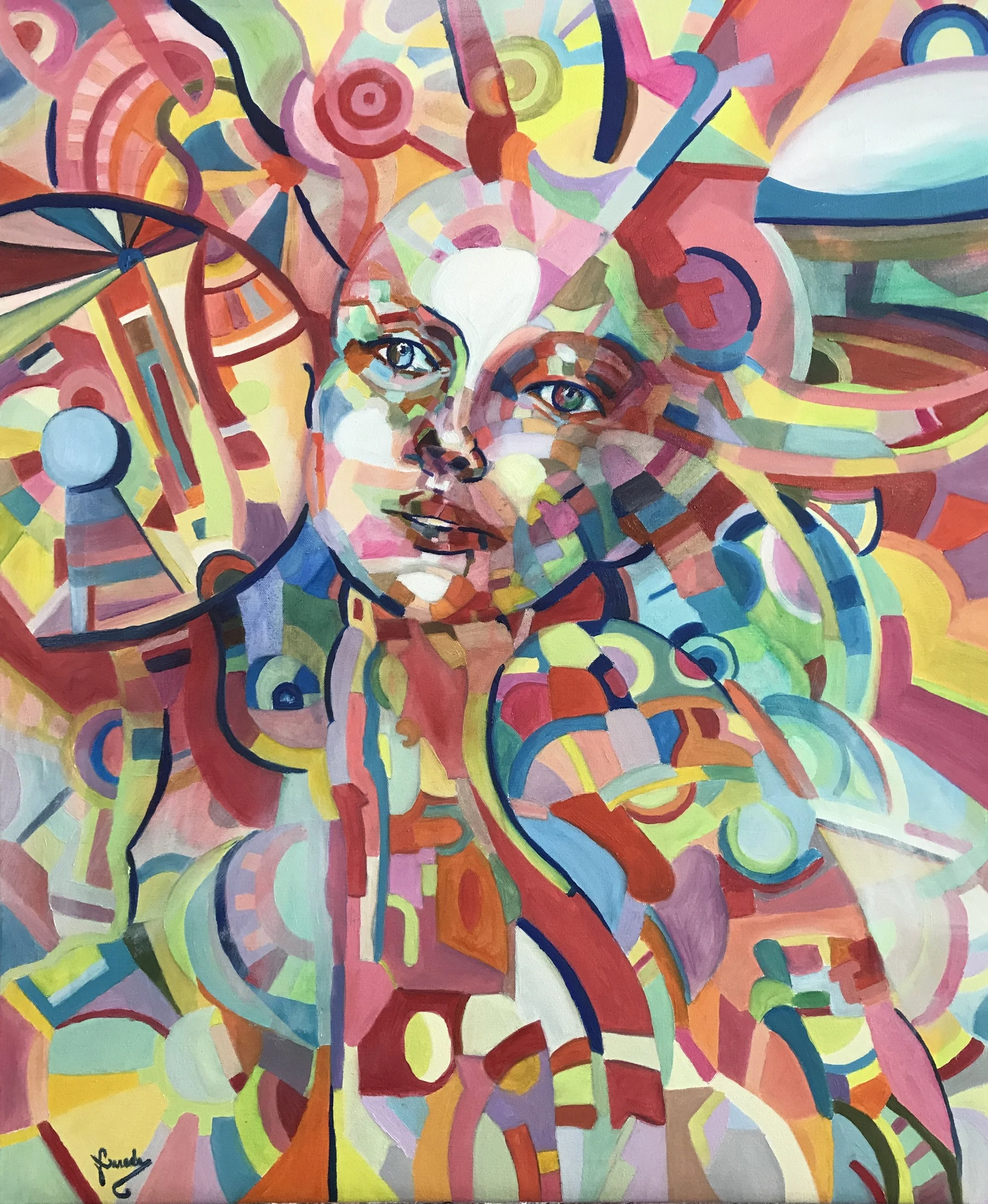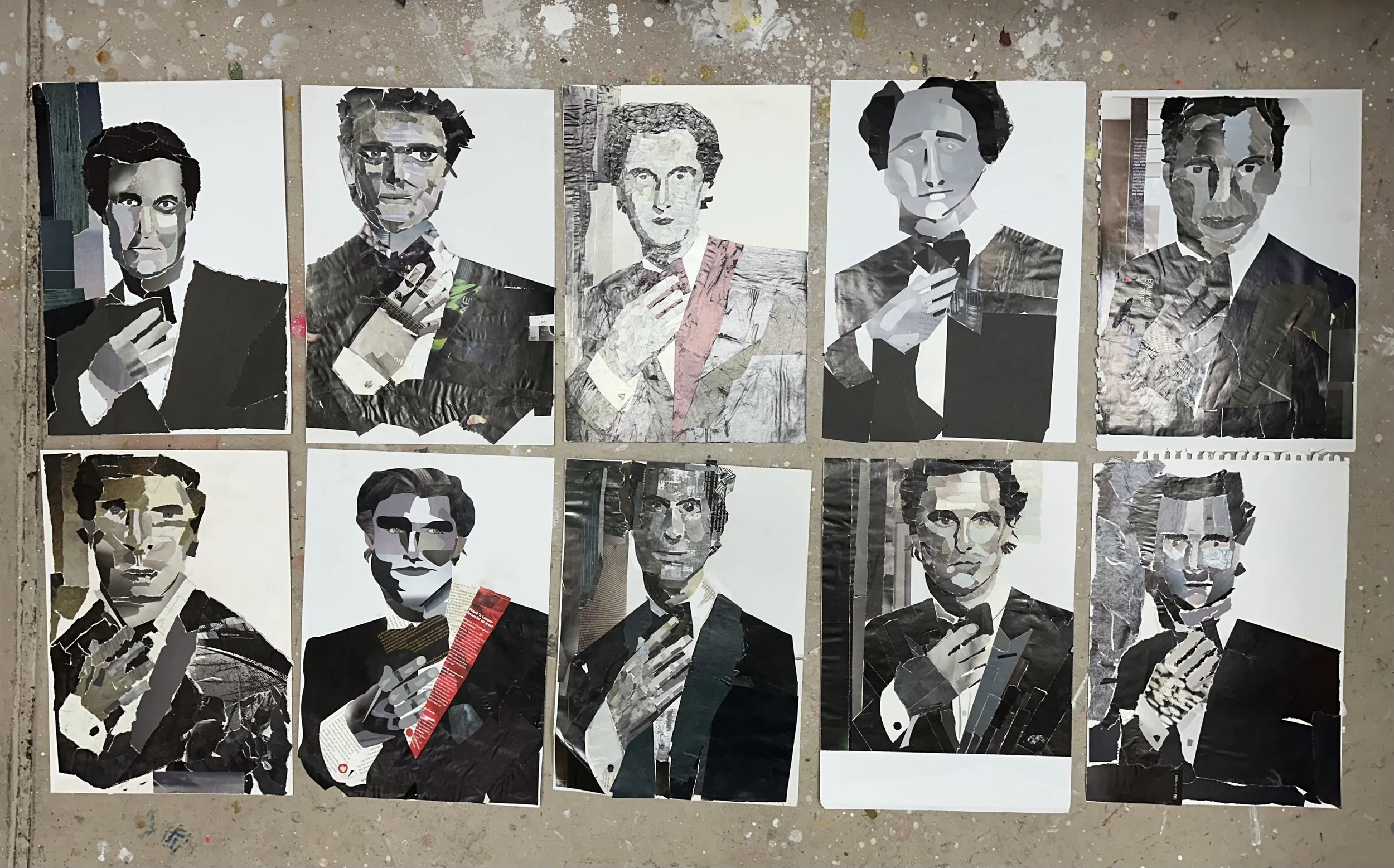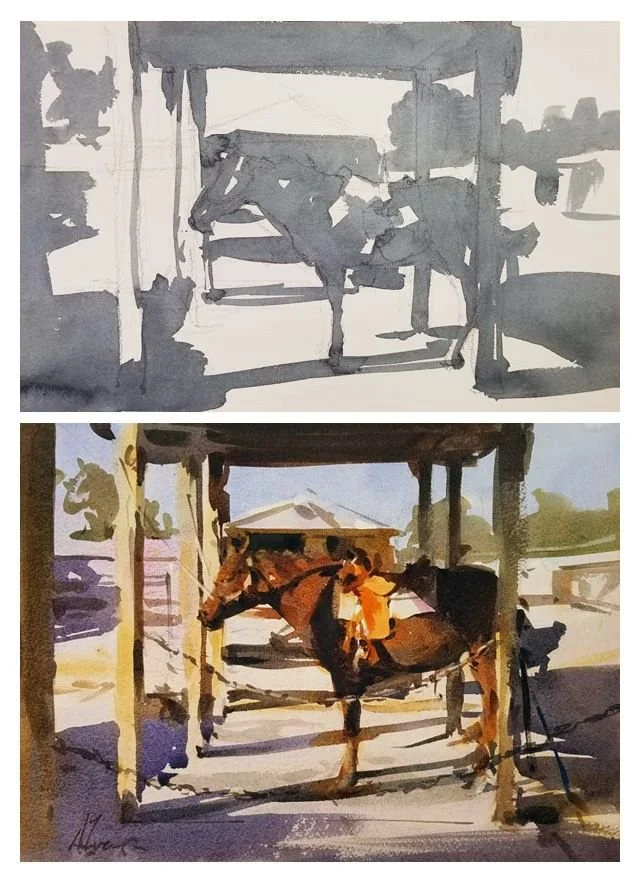"Rivers of Light and Shadow: An Introduction to Notan
'“A painting is not a picture of a thing—it is a thing."
— John Baldessari
A painting should read as a single, whole statement, not a collection of unrelated parts.
Let’s dive into the concept of ‘Notan’ to discover how we can engage with the world and our art differently, to achieve balance and harmony in artistic composition.
What is Notan?
Notan is a Japanese concept in art that focuses on the interaction and harmony between light and dark shapes within a composition. The word "Notan" literally translates to "light-dark" or "dark-light" in Japanese.
Historically rooted in Japanese aesthetics, Notan emerged from the philosophy that beauty lies in the balance of opposing forces. This concept is also sometimes called "massing," "shape welding," or "value massing" in Western art culture.
The concept of Notan is useful because you begin by seeing the world as simple shapes of light and dark, not objects. Seeing the structure and designing a strong foundation helps hold a painting together.
Notan reveals the bare bones of an image. What holds up when you take away colour and detail?
The core principle of Notan is the balance between positive and negative space, where both elements are equally important in creating a cohesive visual impact.
We are not looking to arrange the 'named things', but looking to see and emphasise contrasting tonal shapes to achieve artistic harmony.
Rudolf Arnheim teaches that clarity in visual art doesn't mean simplicity—it means the structure is perceptible and expressive. Good art makes its internal logic visible.
When viewers can "read" the underlying structure, they experience beauty, tension, or unity more clearly. Clarity comes through structure, and Notan provides that structural foundation.
Above: Patrick Lee’s Notan sketch during a figure drawing session. I took an online course with him where he prompted us to do lots of Notan studies. Below:
Types of Notan
2-Value Notan: The simplest form, using only black and white to explore the relationship between positive and negative space.
3-Value or Multi-Value Notan: Incorporates shades of grey in addition to black and white, allowing for more nuanced compositions.
Defining ‘Value’
Before we go further, I want to give a quick definition of what a ‘value’ means when we are talking about Notan.
Value refers to how light or dark something is, in relation to its surroundings. It’s not about colour, it’s about light.
In a black-and-white photo, everything is a value. From white to black, including all the greys in between.
Value Pattern
A value pattern is the way the light, medium, and dark shapes are arranged in a composition.
It’s like a black-and-white map of your painting that helps the image “read” clearly, even from a distance. Think of it as the shapes of light and dark that organise a painting.
Value Relationships
Now that we understand values, when we talk about their ‘relationships’, we are describing how the light and dark values interact/relate with each other.
Are they highly contrasted or close together?
Which is lighter - the object or the background?
How do nearby shapes compare in value?
A strong value relationship means that the difference in the lightness and darkness of a painting’s elements is deliberate and clear, with noticeable contrast in value between shapes or areas.
These strong relationships allow you to create:
Depth (contrast, pop)
Focus (direct the viewer’s eye)
Mood (high contrast = drama, soft contrast = calm)
We’ll be using these terms throughout the Notan study, so keep them in mind moving forward.
Expert Insights
James Gurney: "The reason I find such an exercise useful is that a simple tonal design has much more impact. You can tell at a glance what's going on, and it reads from across the room or when it's reduced to a tiny size. If I don't do it, I tend to put the full range of values in each area, or worse yet, render each section of the picture in middle values."
Advice from Frank Webb: "You cannot paint values you have not seen."
Troubleshooting with Notan
If a painting looks flat or confusing, start by assessing the value relationships (the interaction of light and dark).
Ask yourself:
Are the lights and darks so scattered that nothing stands out?
Do the lights and darks lead the eye around the image, or confuse the eye?
The way I use Notan is that I squint at the scene, not to see less, but to see what matters. I strip away details and look for tones, shapes, light and shadow.
I often refer to this as the 'river of light and the river of darkness' in my painting.
I use these rivers to control how your eye flows through the painting.
Exercises
Exercise 1: Black & White Paper Cut-Out
Objective: This exercise helps you understand the balance between positive and negative space by showing how flipping shapes creates visual harmony.
Time: 30-45 minutes
Materials:
Black paper (cut into a square)
White paper (background)
Scissors
Glue Stick
Instructions:
Place the black paper atop the white background paper.
Cut shapes from the black square and flip them outward, placing them on the white background to create a mirror-like composition.
The goal is to balance the positive (black) and negative (white) shapes.
Variations:
Try organic shapes (curves, natural forms)
Try geometric shapes (squares, triangles, etc.)
Success indicators: The composition feels balanced with neither black nor white dominating; shapes create visual rhythm and flow.
See some of my art class examples on the right…
Exercise 2: Building compositions with collage (2 and 3 values)
Objective: Create scenes from black, brown, and white shapes to learn to build the core structure of a composition.
Time: 45-60 minutes
Materials:
Scissors
Brown paper
White paper
Black paper
Glue Stick
Instructions:
Using the brown paper as the background, cut out shapes with the black and white paper to build your own composition.;
The black paper is your shadow, the white your light, and the brown paper your mid tones.
Focus on large shapes first, not details.
Common mistakes to avoid: Getting caught up in details; making shapes too small or fragmented; not squinting enough to see the big picture.
Exercise 3: Building compositions with pen and pencils (2 and 3 values)
Objective: Understand how light and dark shapes interact in a real-world scene. This exercise helps students simplify complex scenes and plan compositions effectively.
Time: 60-90 minutes
Materials:
Pencil or similar dry medium
White paper
Landscape reference (photo or plein air)
Instructions:
Choose a landscape scene with strong contrasts (mountains, trees, buildings).
Squint your eyes to blur out details and focus on the big light and dark shapes.
Create 2 and 3-value studies using ink, pen, and pencils.
Success indicators: The landscape reads clearly even at a distance; there's a clear pattern of light and dark that guides the eye through the composition.
Exercise 4: Plan a painting by making 2 Notan sketches and a colour study unrelated to local colour
Objective: Think through all possibilities and clarify the structure before you commit to canvas.
Time: 60-120 minutes
Materials:
Black markers or ink, gouache, acrylic or oil
Brown Cardboard
Reference that you’re considering for a bigger painting
Instructions:
Draw 4 blocks roughly 15 x 15cm
Draw the scene in black, thus only 2 tones
Next, draw in three tones, adding white
Experiment with emotional colour that is not ‘local’ colour.
Key insight: This exercise teaches you how to choose a reference well and to adapt it where needed.



Exercise 5: Notan in Master Studies
Objective: Learn from great artists by simplifying their work into Notan studies. You will gain insight into how master artists use light and shadow to create powerful compositions.
Time: 45-60 minutes
Materials:
Black markers or digital tools
Reproductions of master paintings
White paper
Instructions:
Choose a masterpiece from a famous artist (e.g., Rembrandt, Hokusai, Van Gogh).
Simplify the artwork into a 2-value Notan study.
Focus on identifying the balance between light and dark areas.
Compare your Notan study to the original to see how the artist achieved balance.
Recommended masters: Rembrandt (for dramatic light/dark), Hokusai (for bold graphic shapes), Caravaggio (for strong chiaroscuro).
Exercise 6: Digital Notan Study
Objective: Explore Notan using digital tools. Students learn to use digital tools to study Notan and adjust light-dark balance.
Time: 30minutes
Materials:
Digital drawing app (Procreate, Photoshop, Picsart)
Reference images
Computer or tablet
Instructions:
Use a digital drawing app like Procreate, Photoshop, or my favourite, Picsart.
Import a reference image and convert it to grayscale.
Use the threshold adjustment tool to create a high-contrast black-and-white image.
Adjust the threshold to see how different levels of light and dark affect the composition.
Digital advantage: Easy to experiment with different threshold levels and instantly see how value changes affect the overall composition.
Key Takeaways
Notan reveals the underlying structure of any composition
Strong value patterns create more impactful, readable artwork
Both positive and negative spaces are equally important
Squinting helps you see the essential light and dark shapes
Master artists use Notan principles to create compelling compositions
Digital tools can help analyse and understand value relationships
Artists often create Notan sketches to:
Simplify complex scenes into basic shapes
Identify the underlying structure of a composition
Explore abstract patterns that balance light and dark
Figure out how to fix a painting that’s gone off track
Plan stronger, more unified compositions before adding colour and detail
Above are examples of where I used the Notan pattern to see what I need to push or pull in a painting, and below are examples of students who use the Notan pattern to figure out what to correct in their work.
Below is an exercise I did with my Art Classes in 2011, the good old days when we all had lots of scrap magazines lying around, ready to be cut out. I gave everyone a picture of young Matthew McConaughey, and they made collages looking for the right tones in magazines. I love how everyone’s came out differently!
Well, that was a long ride!
Notan can be applied across all visual art and is a great foundational perspective to gain, whether you’re just starting out or you’re already an accomplished artist.

